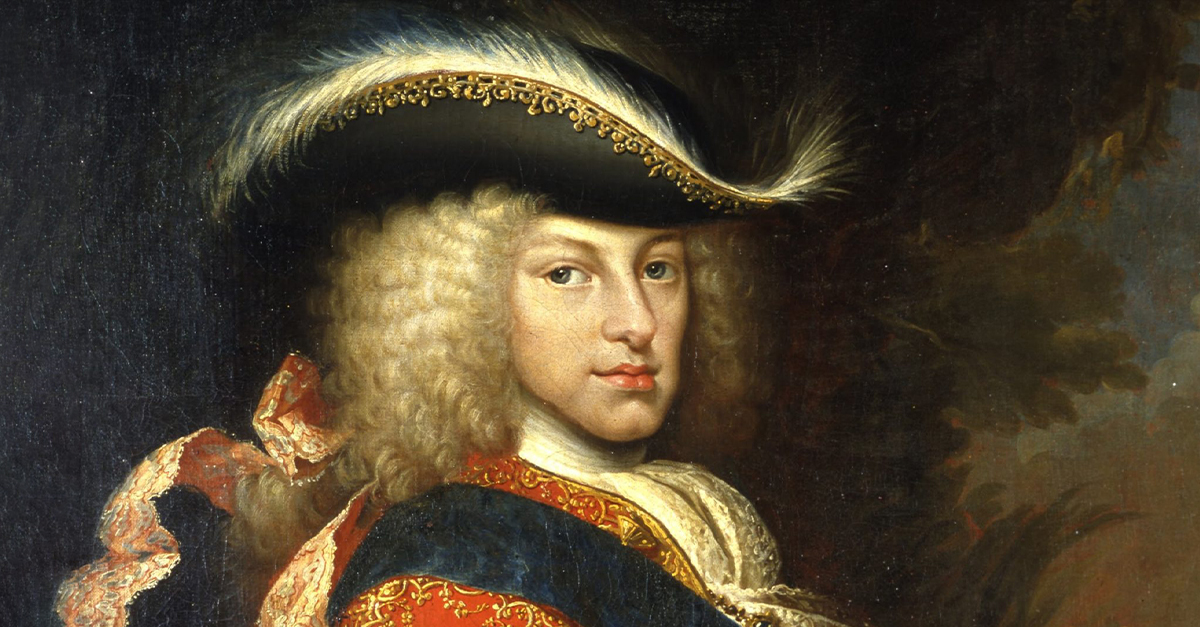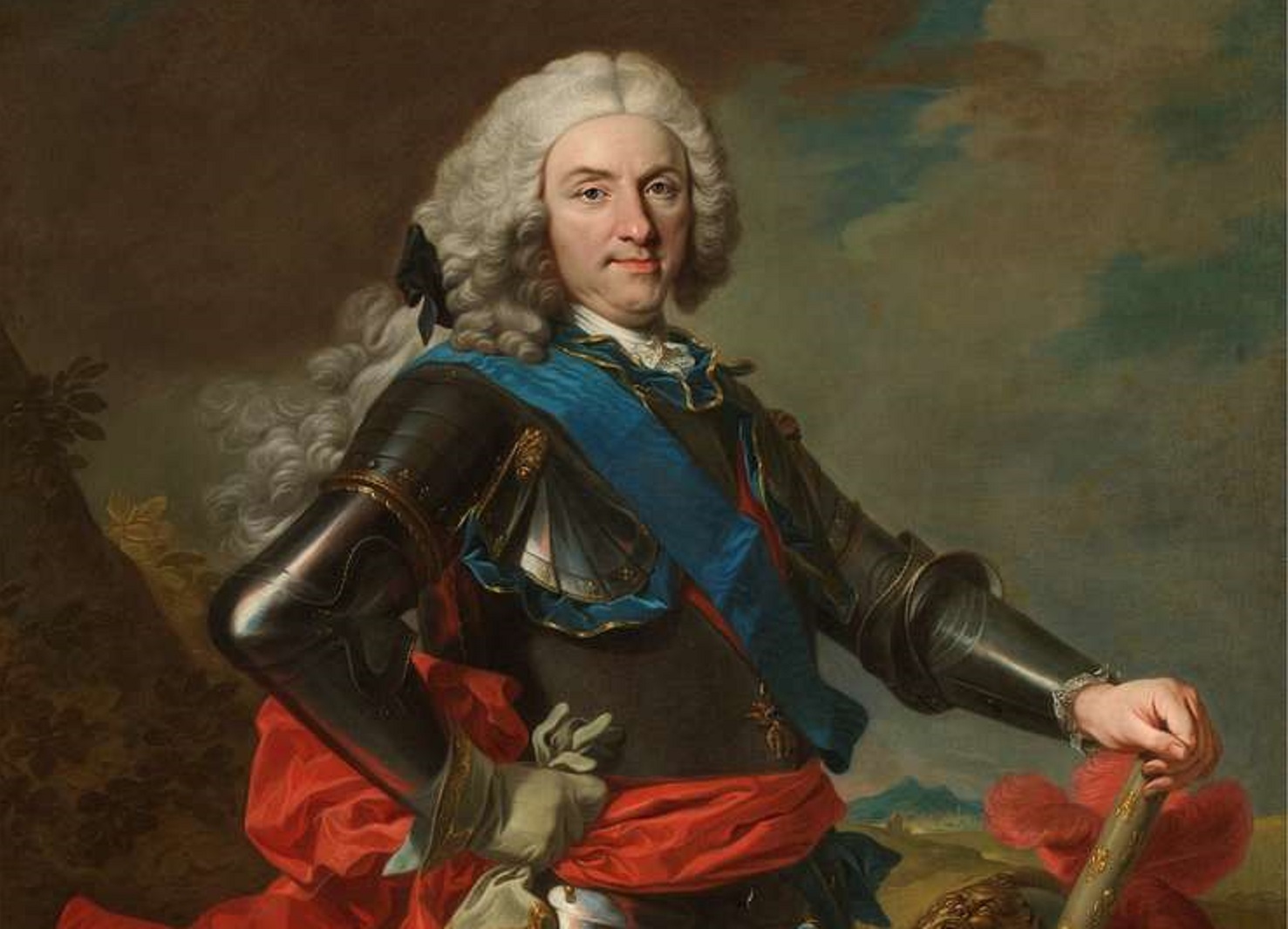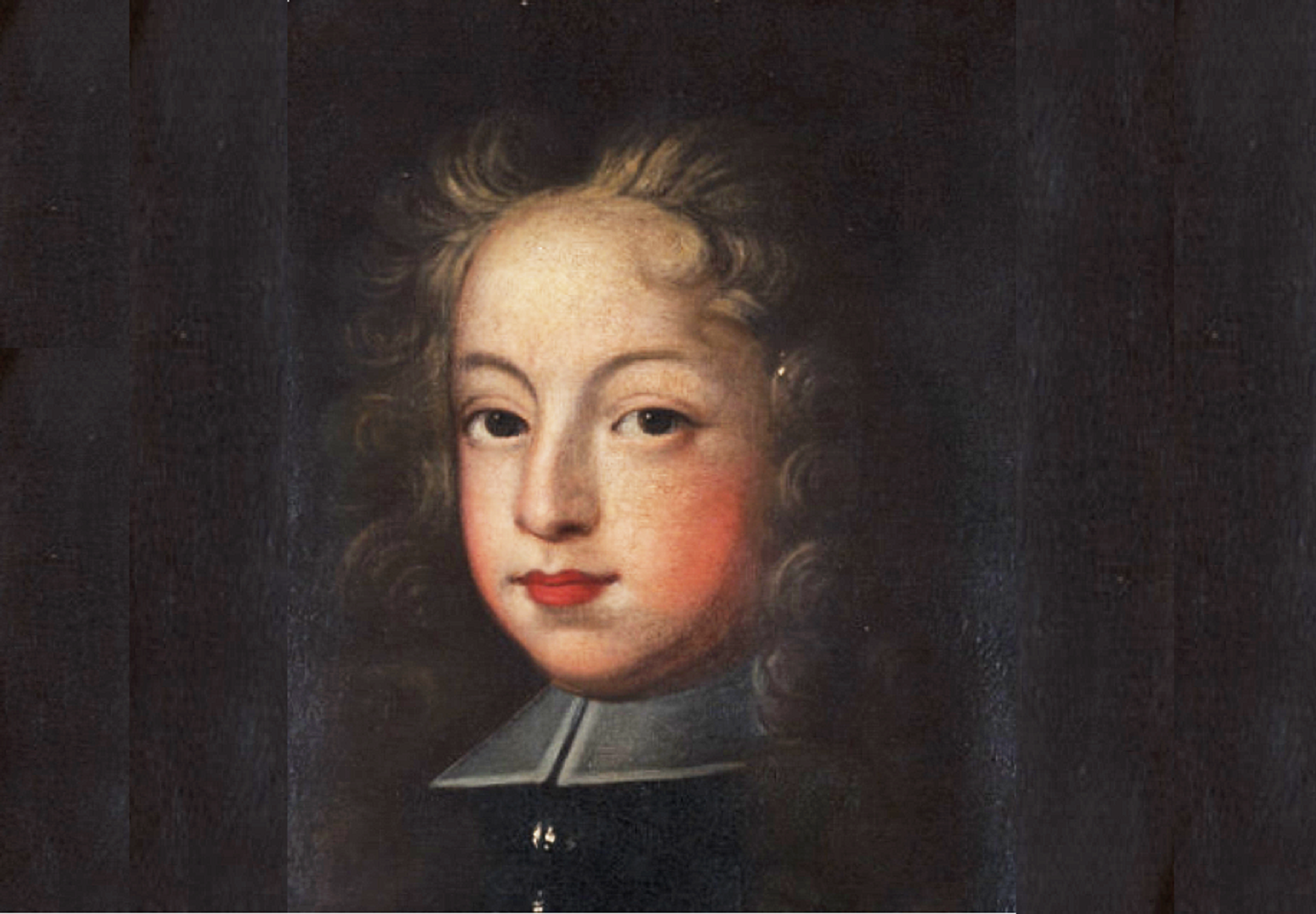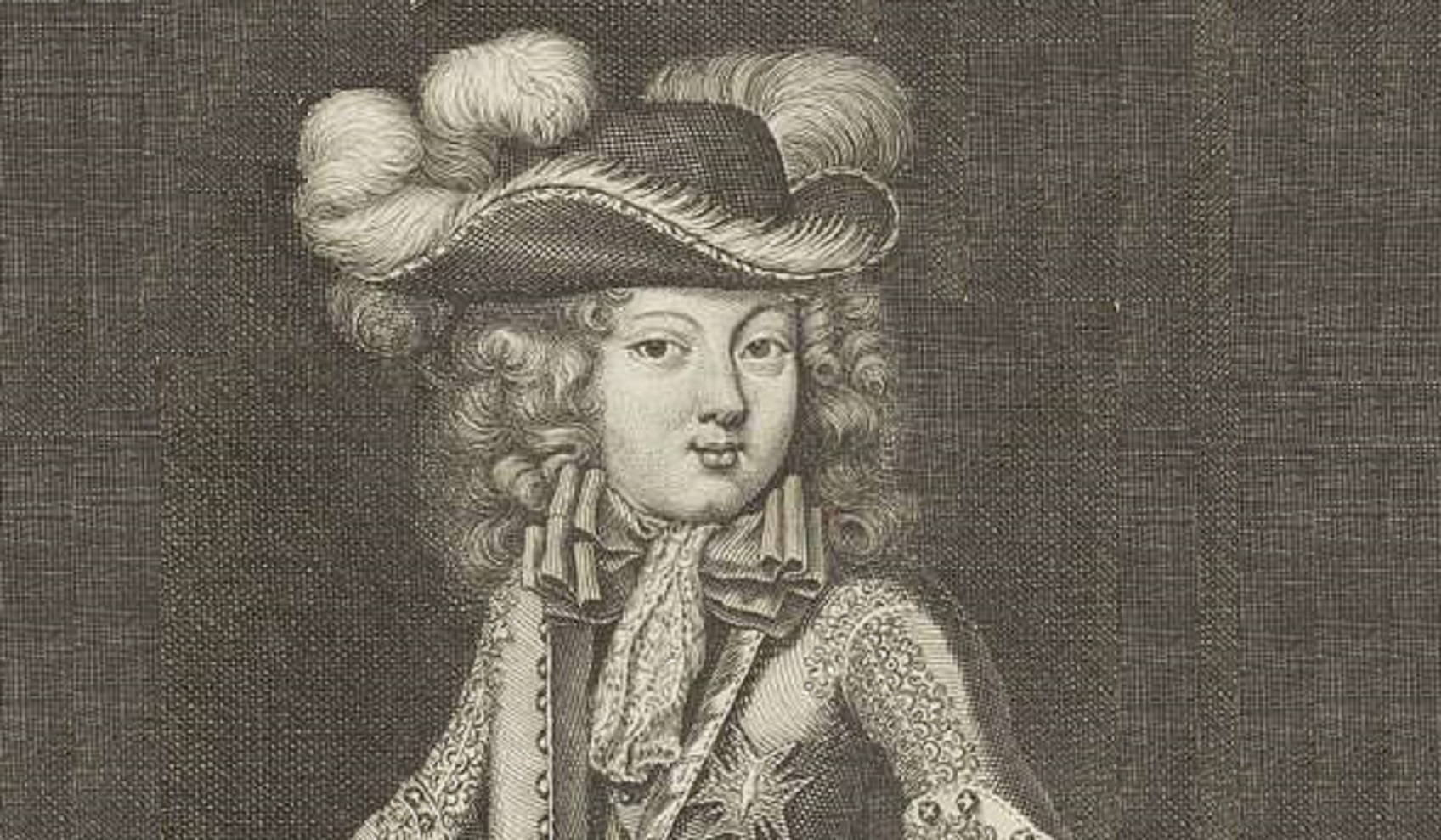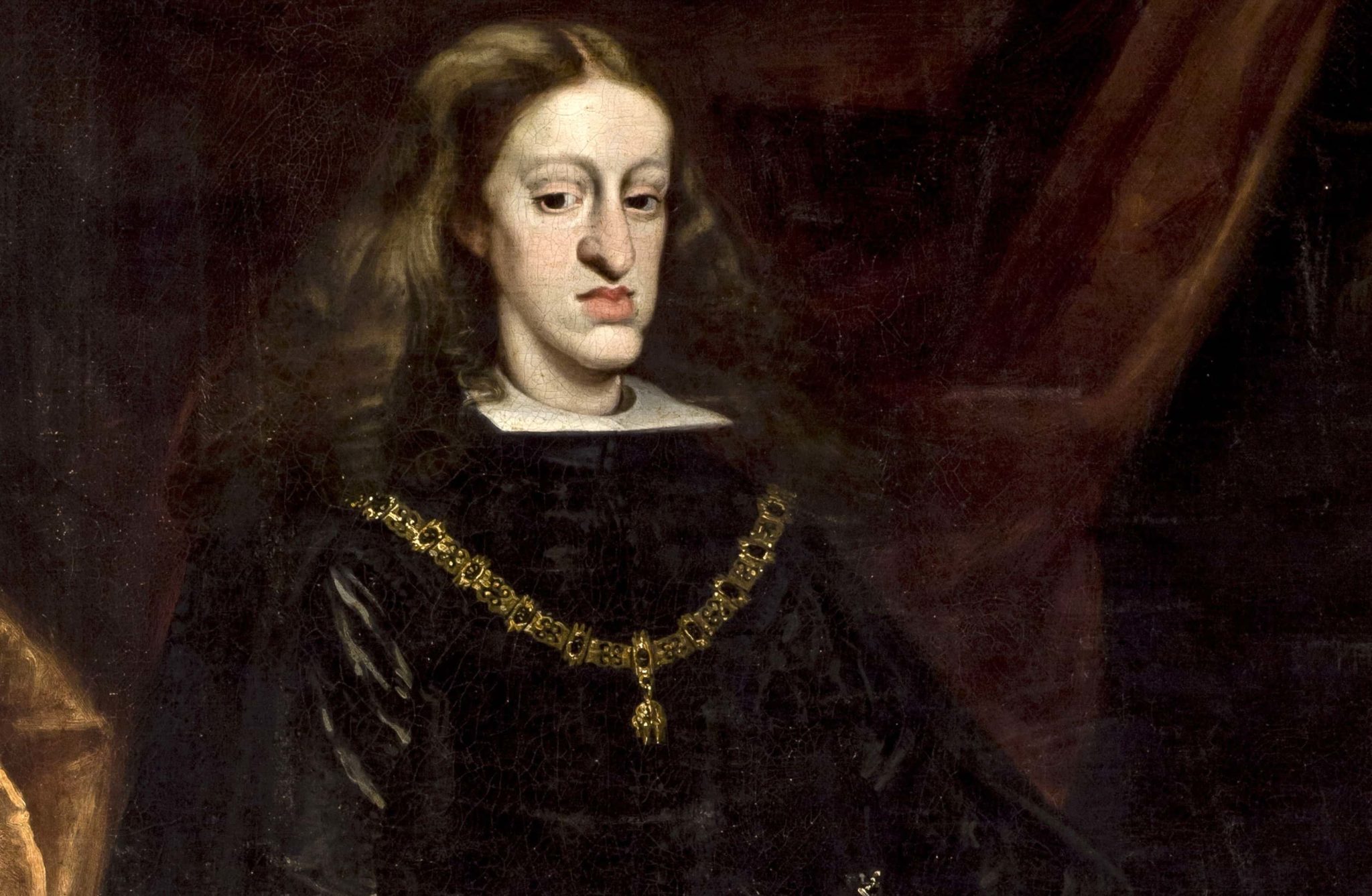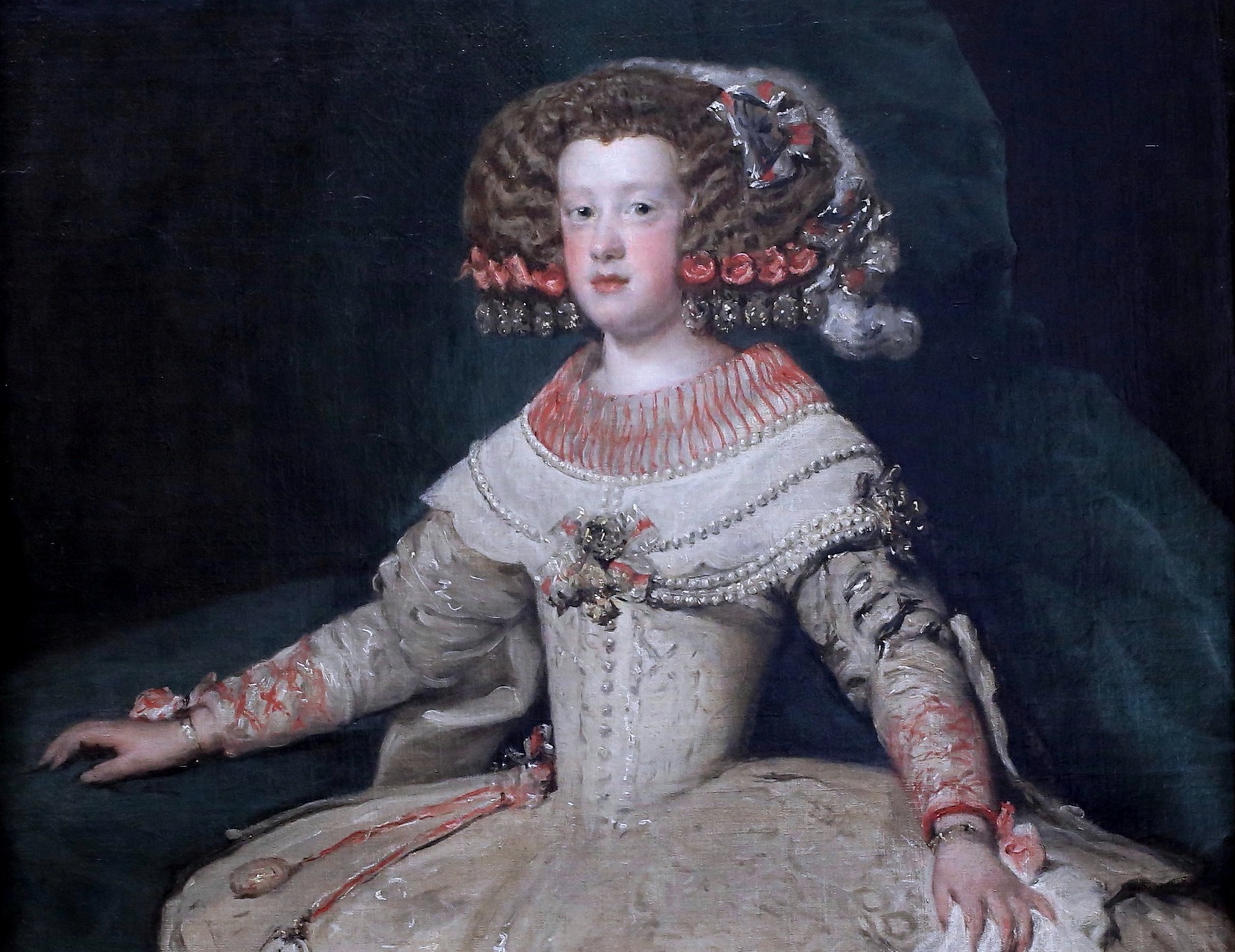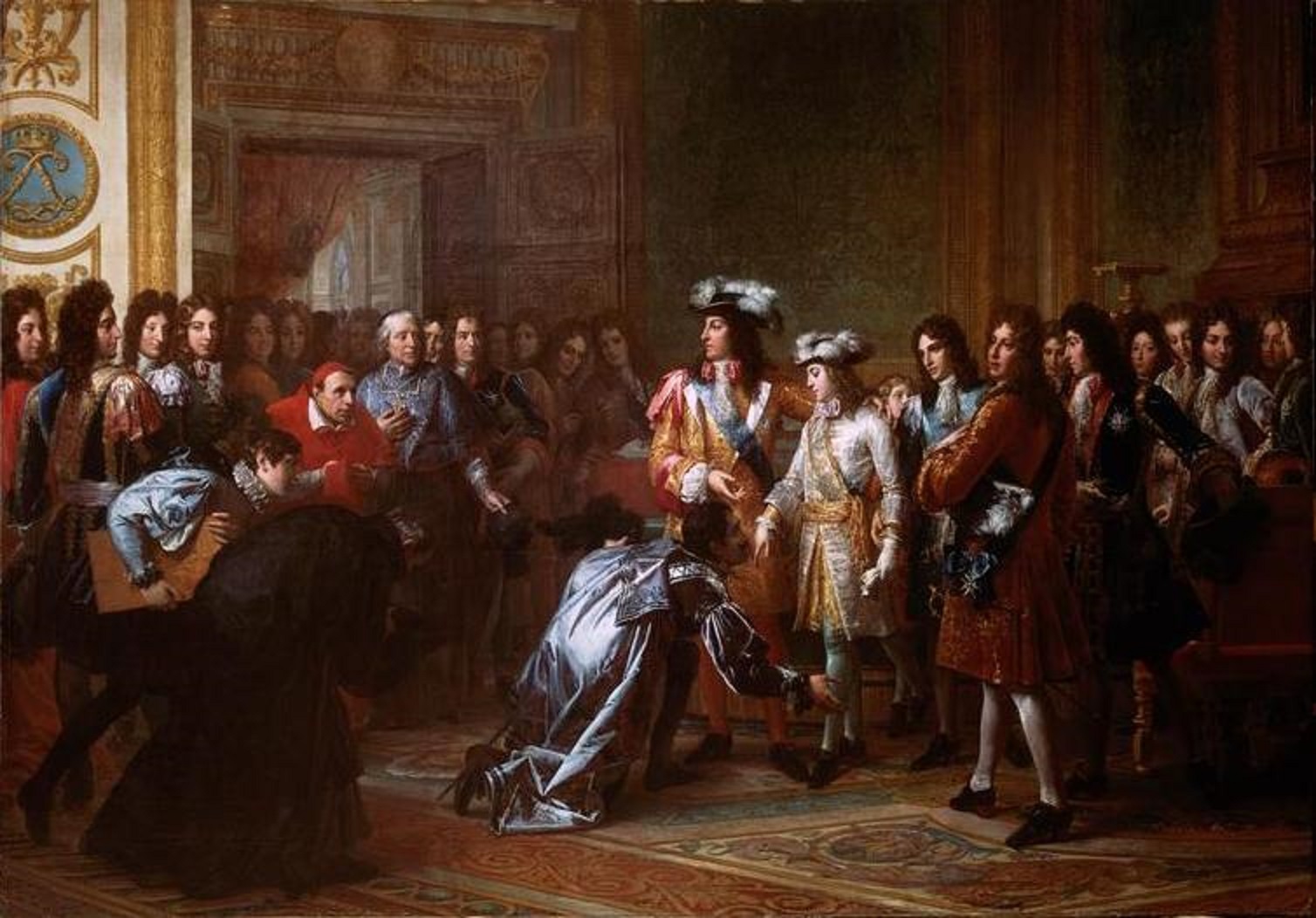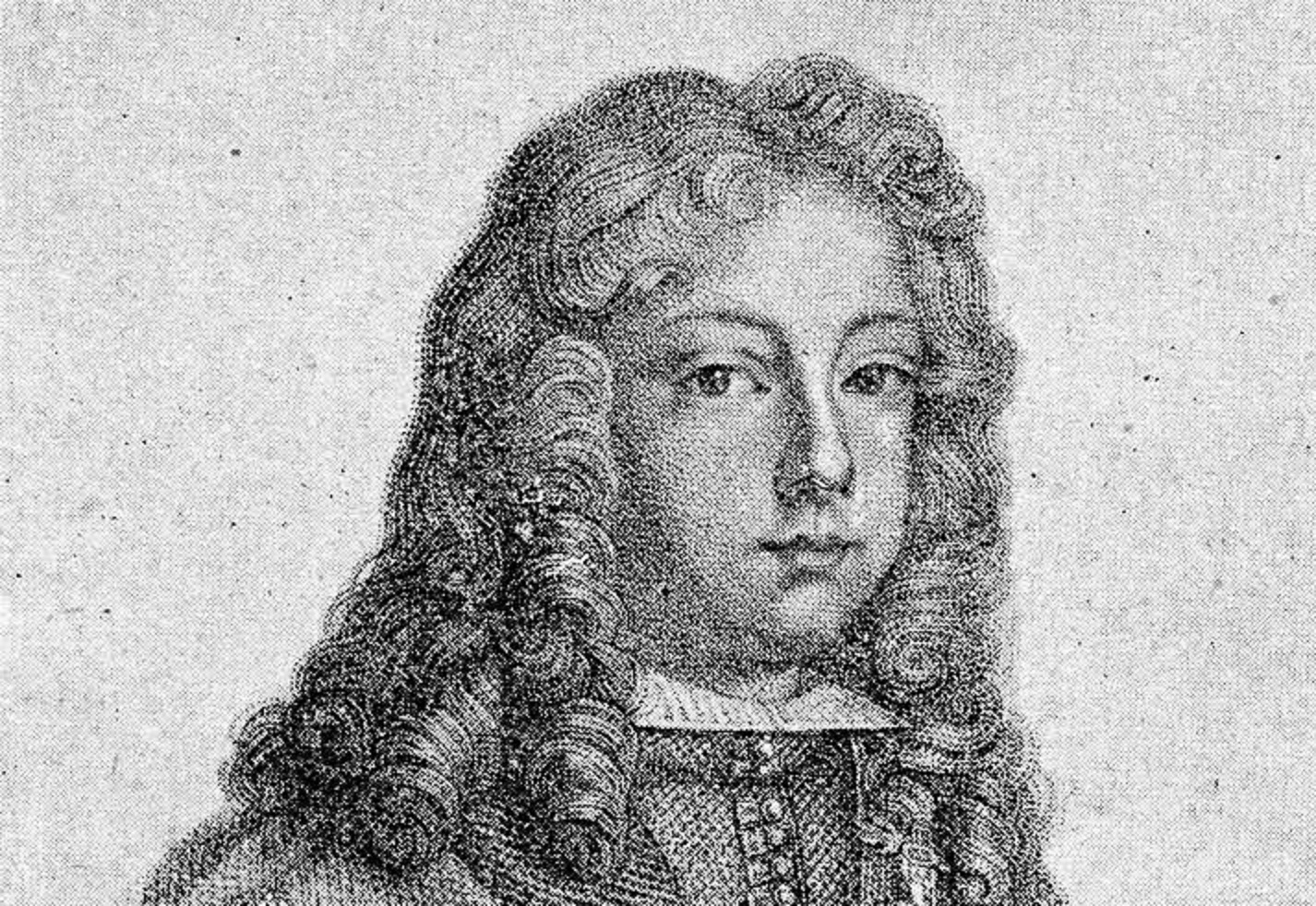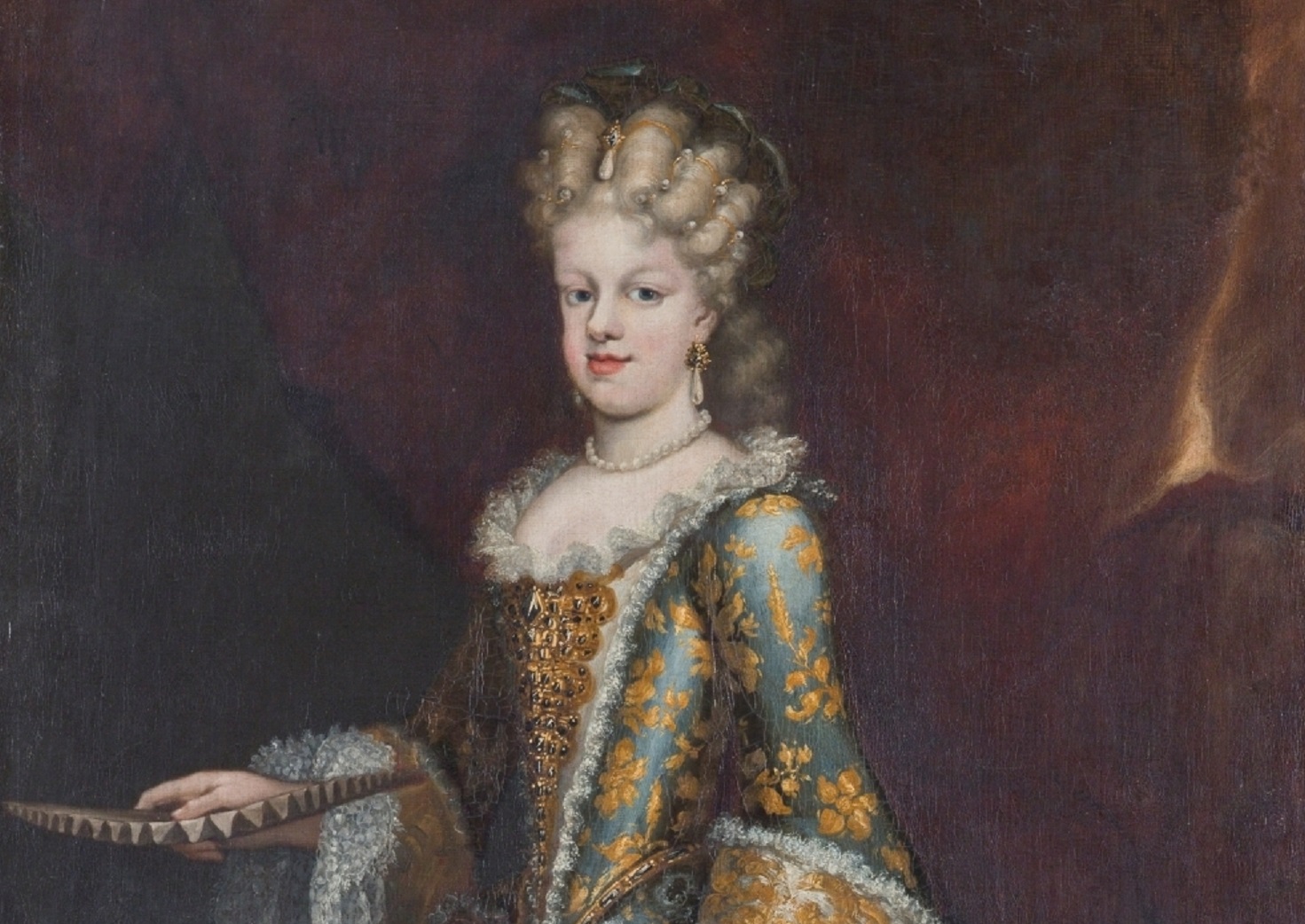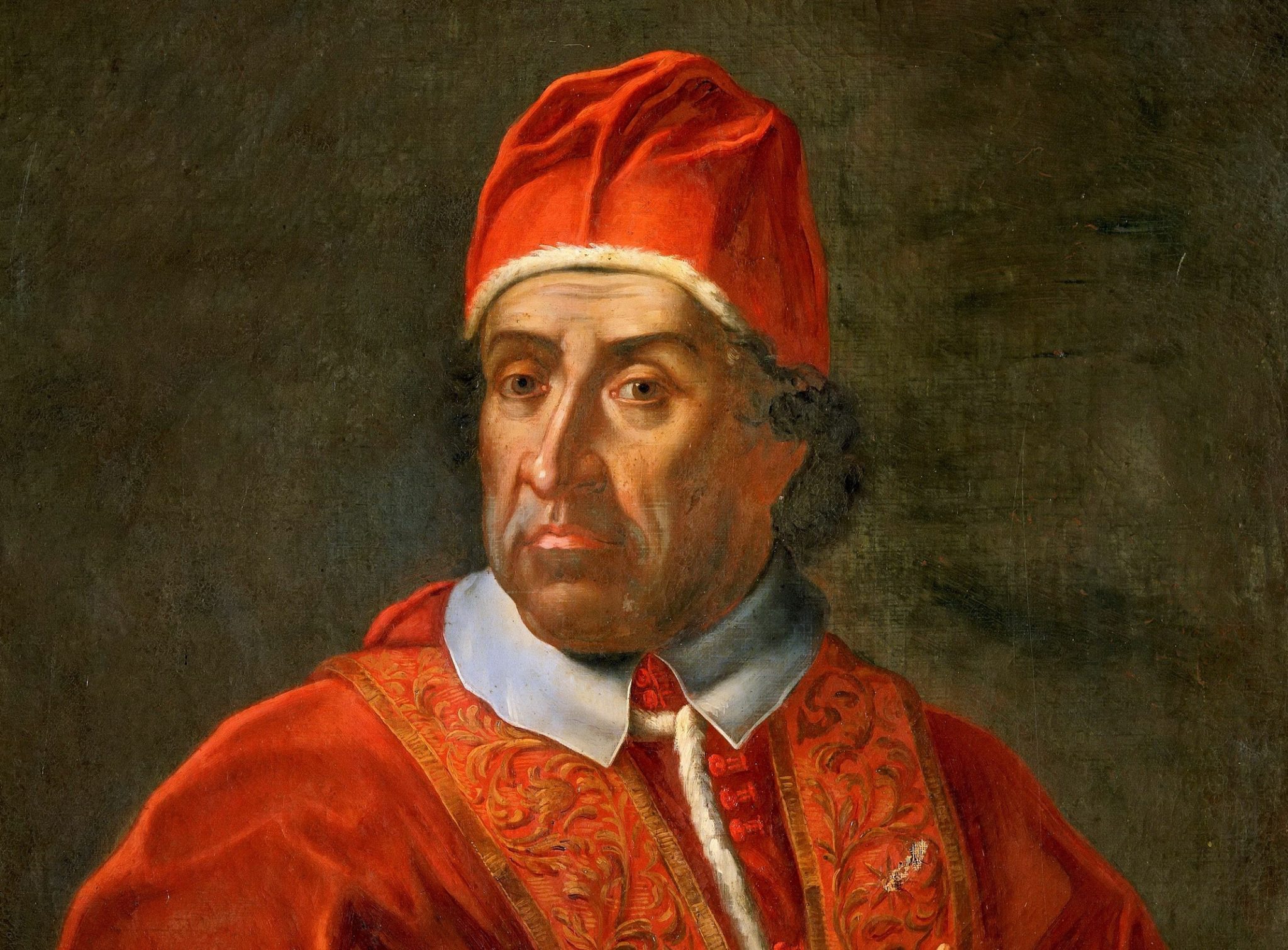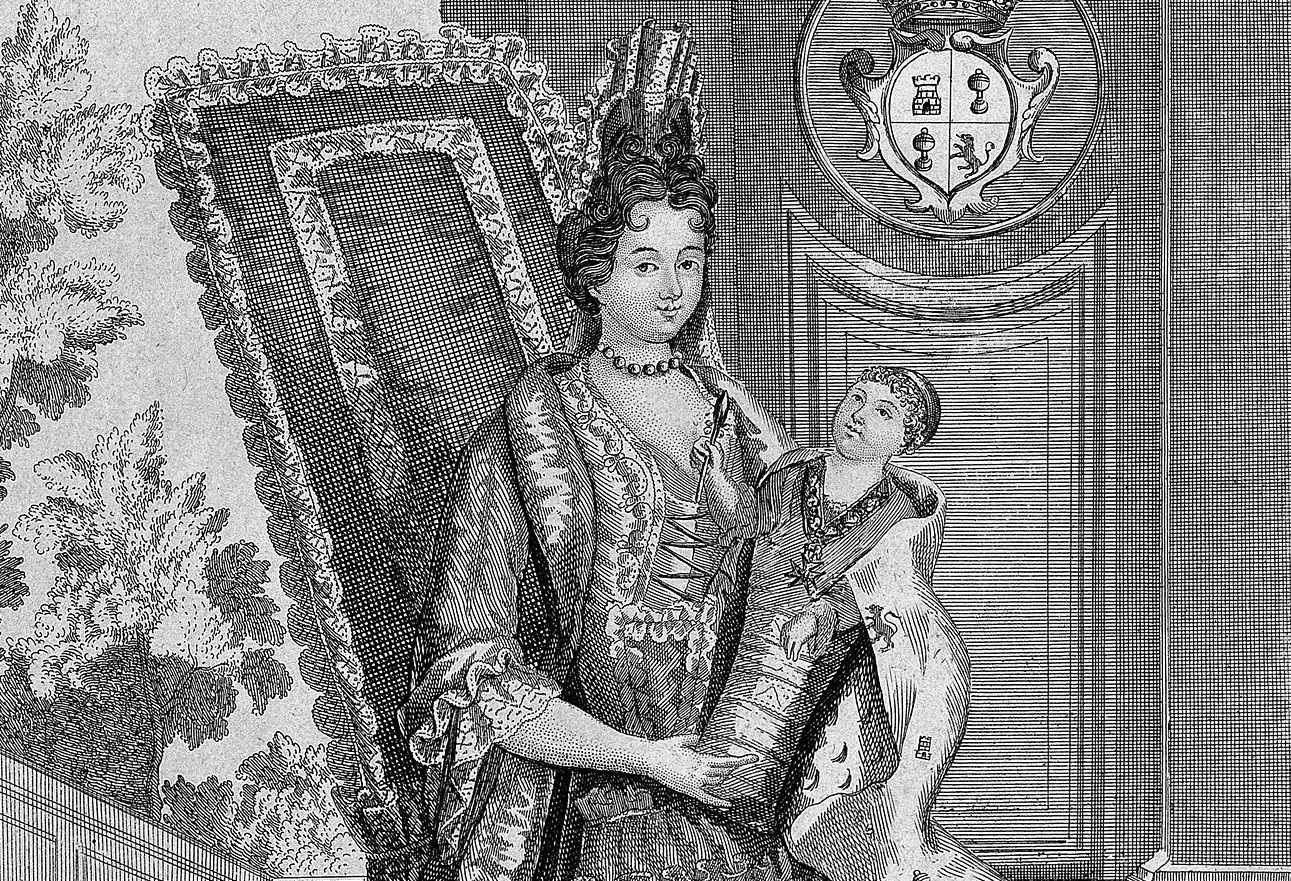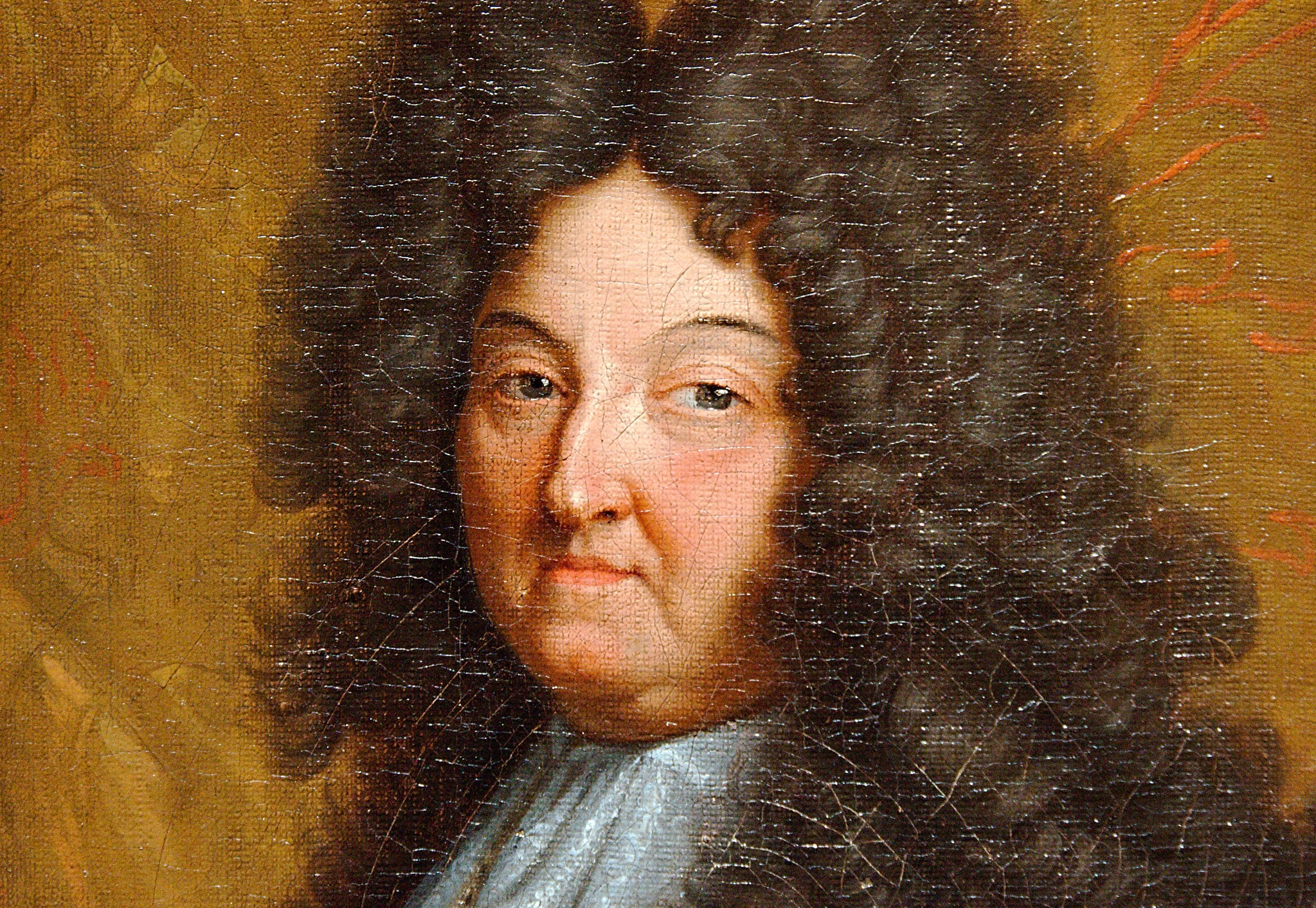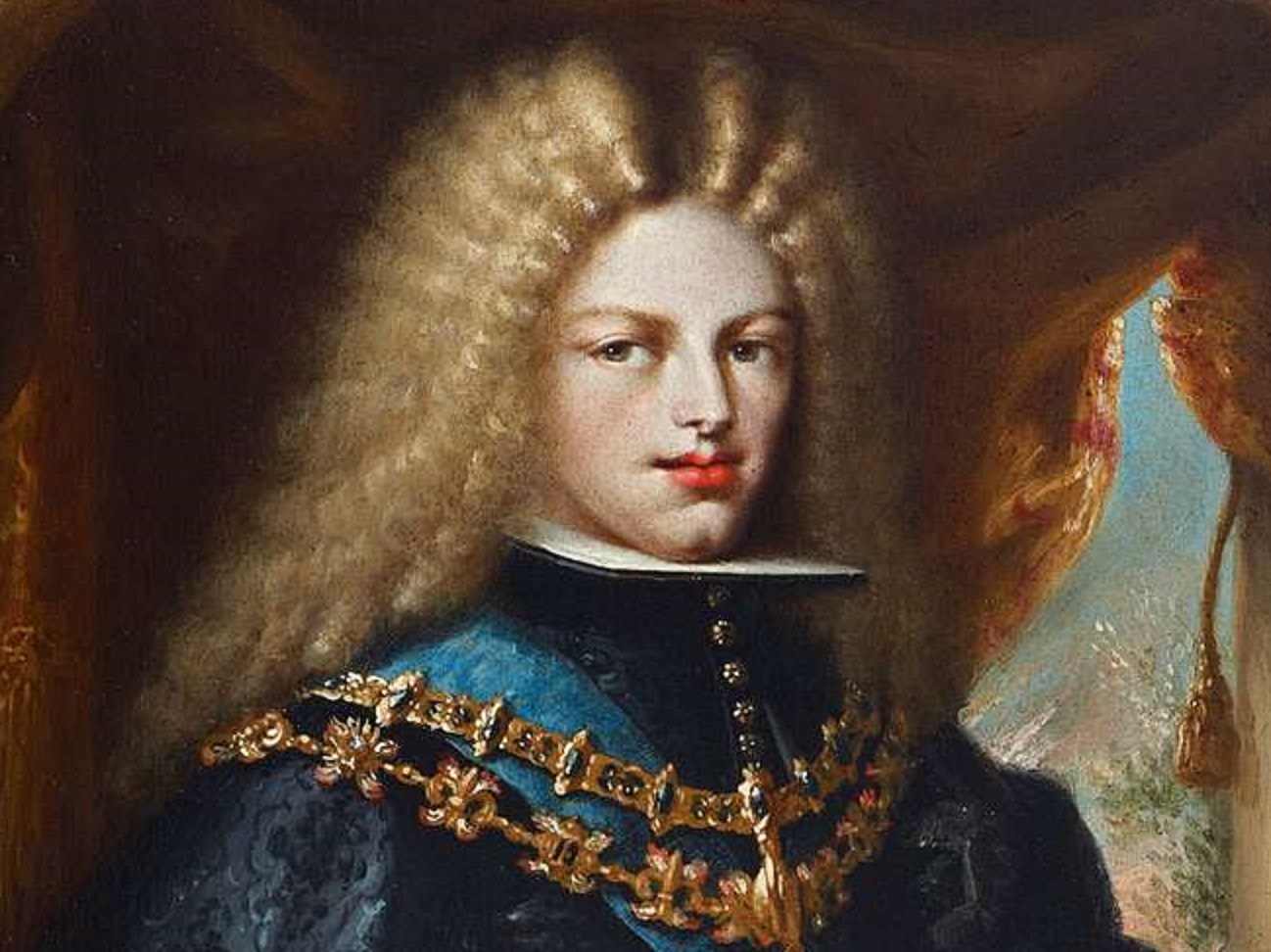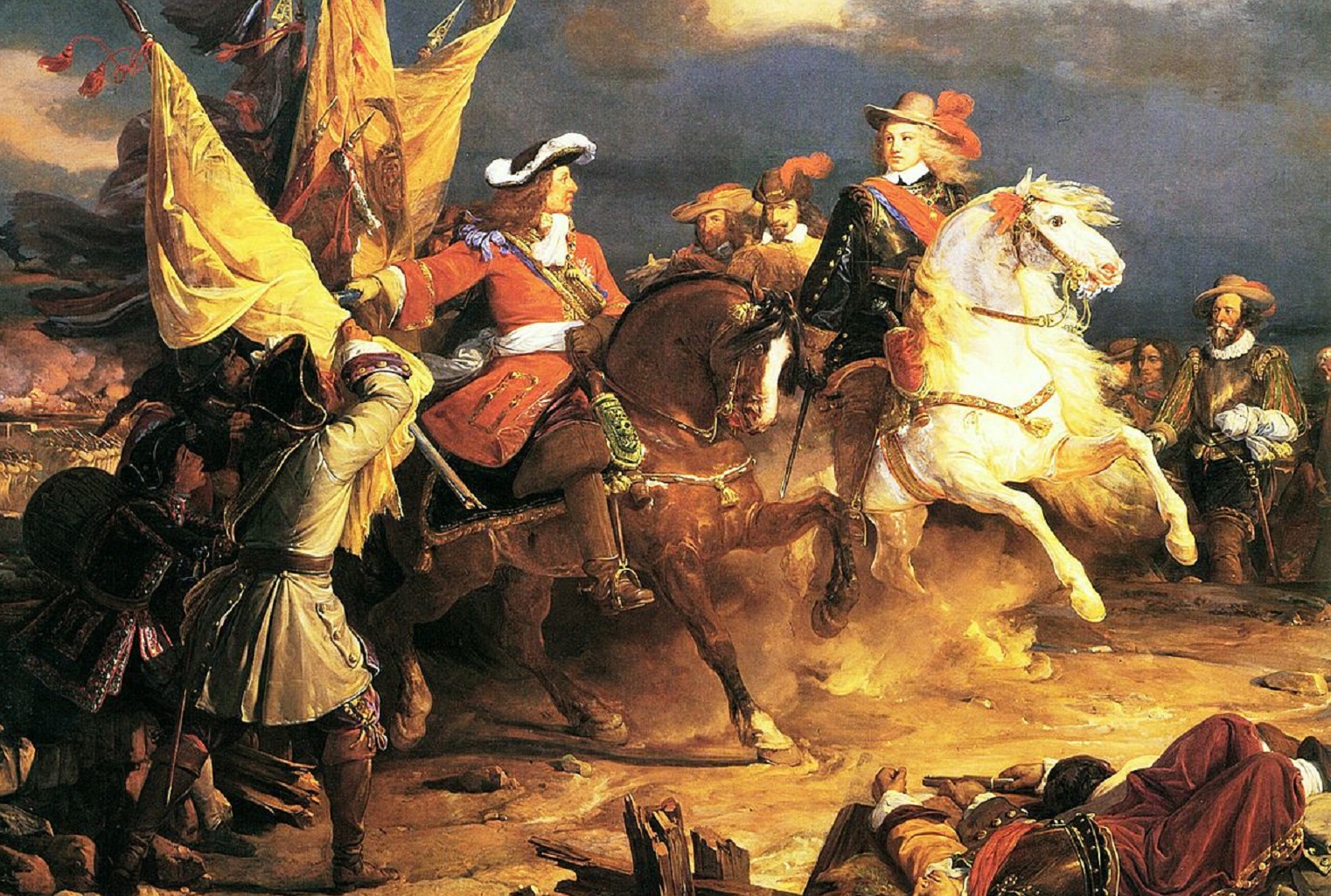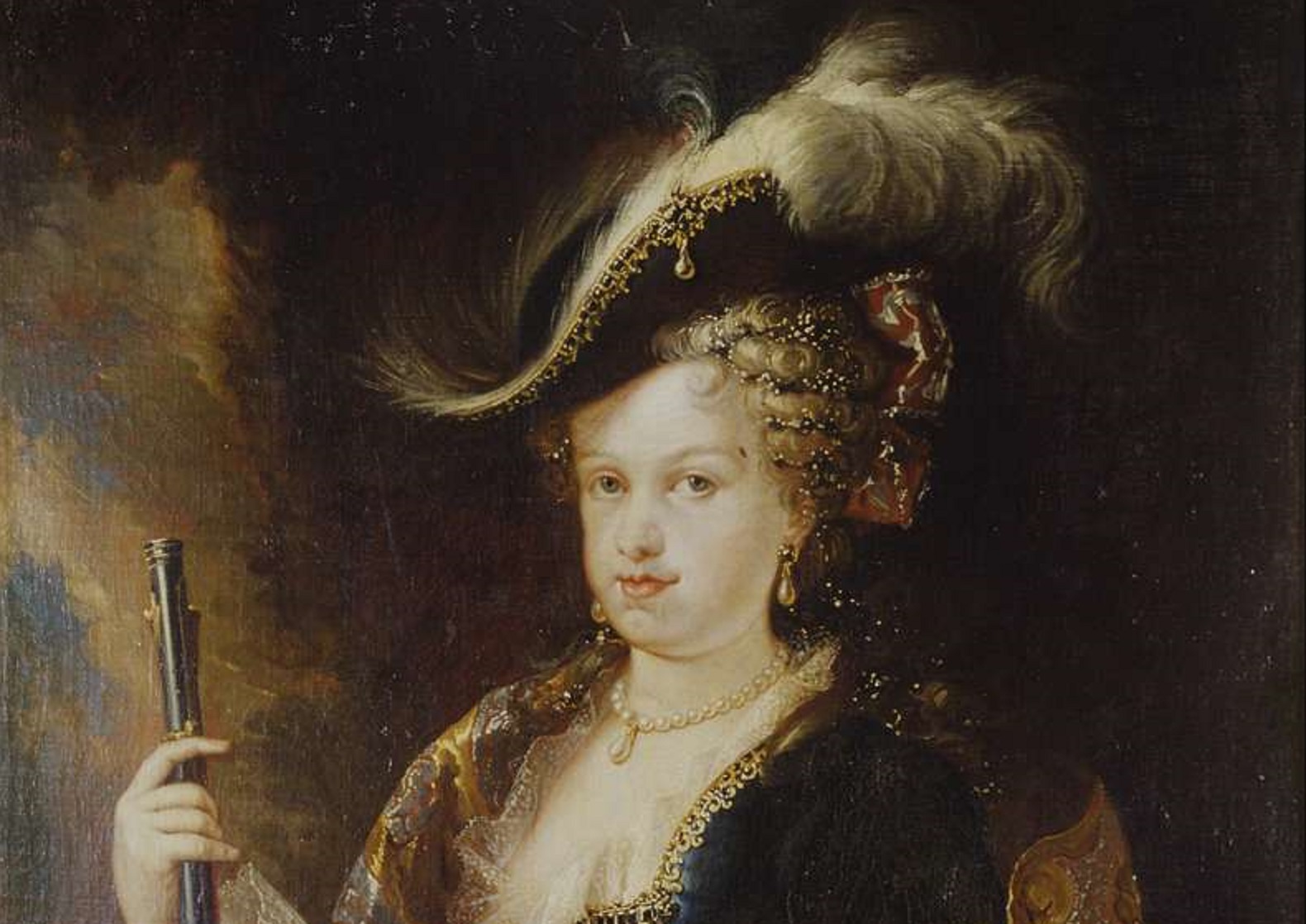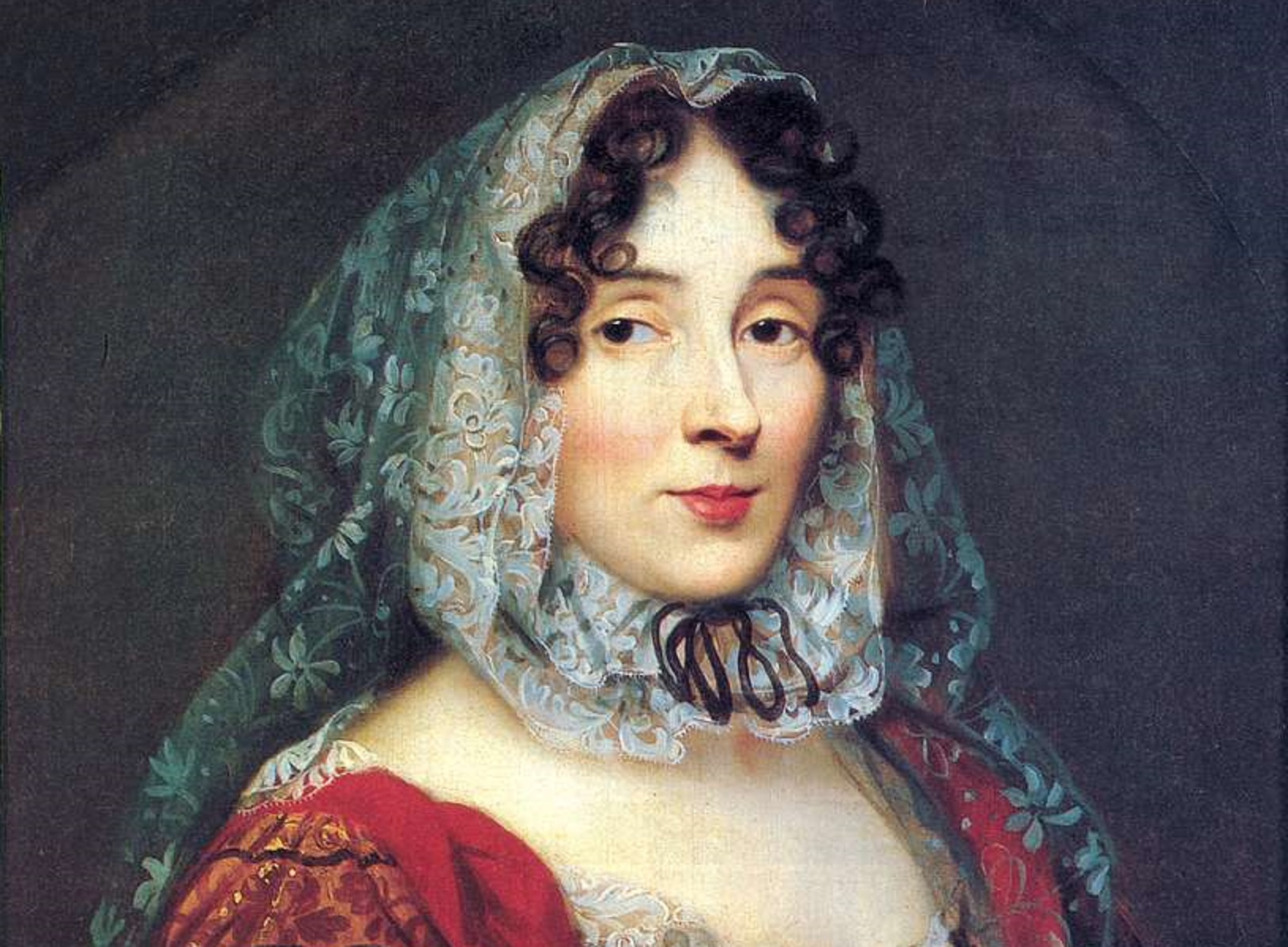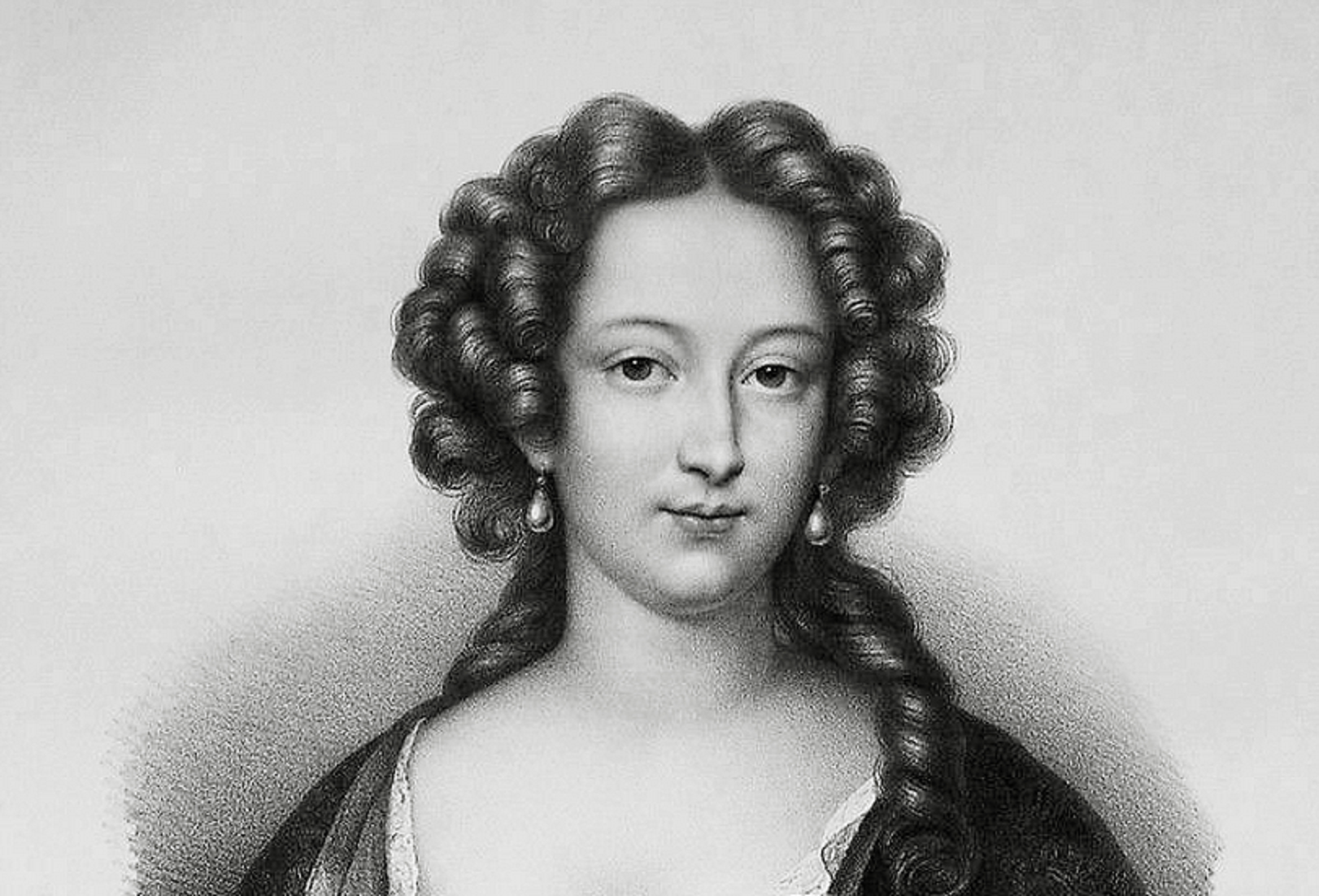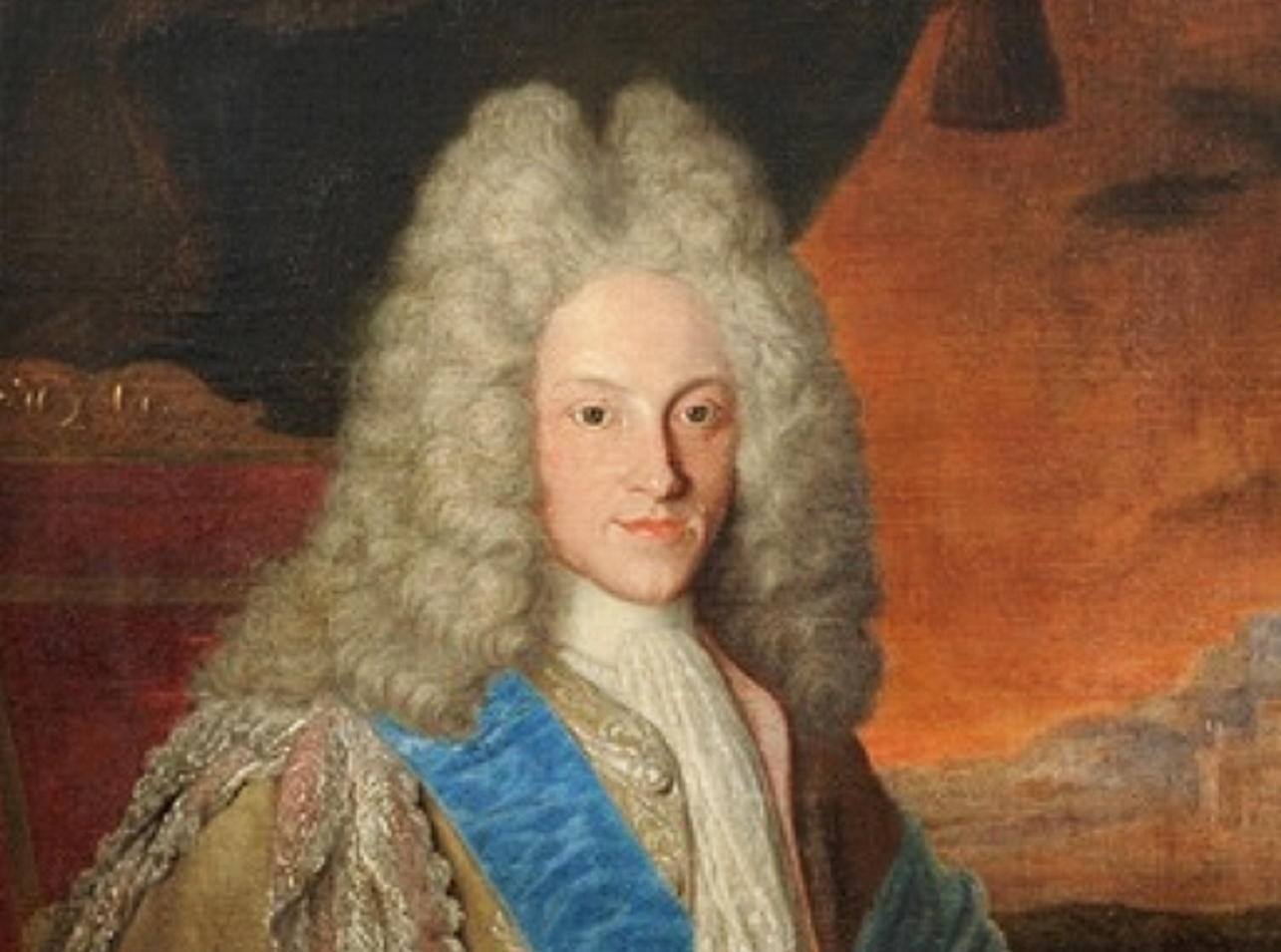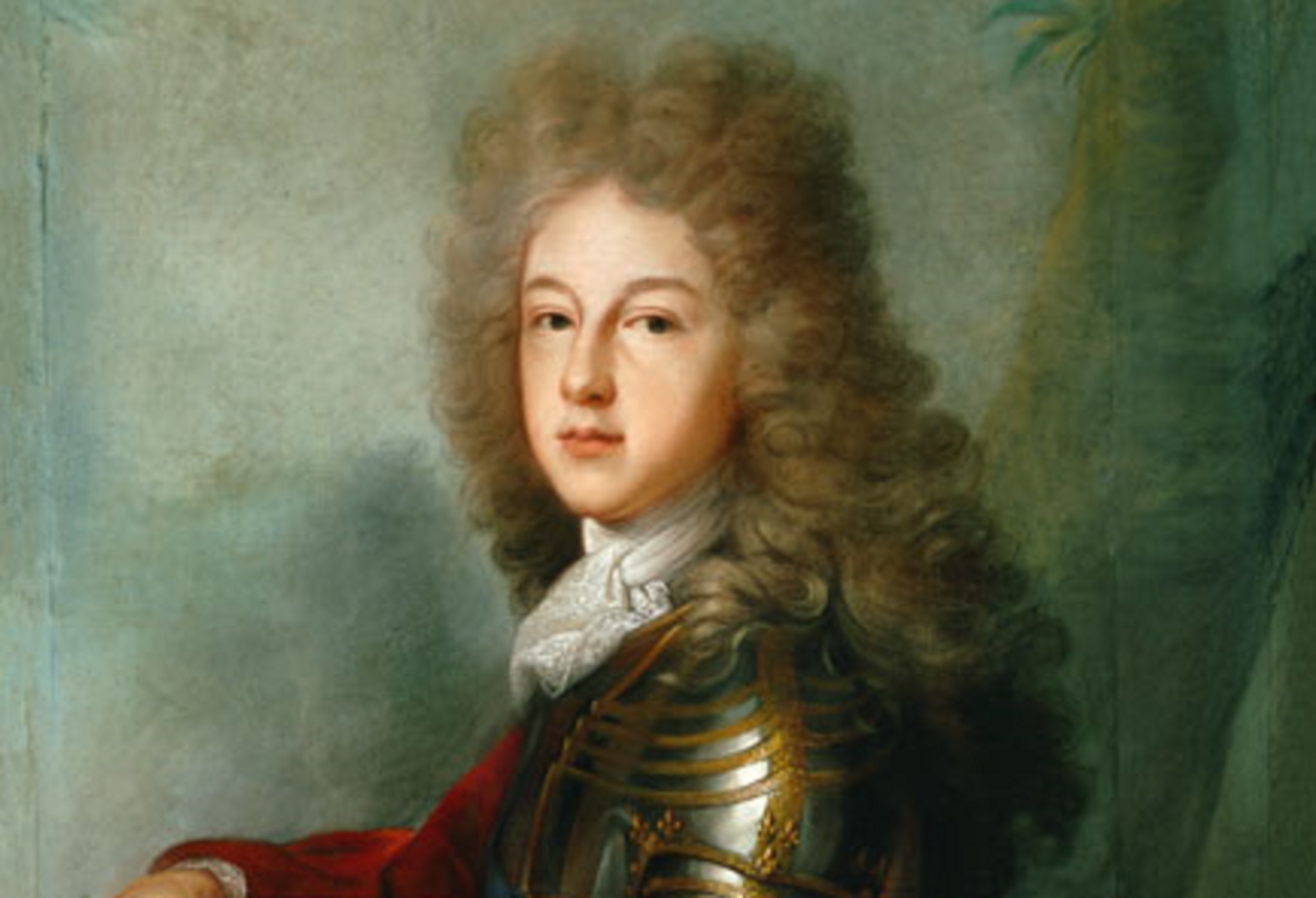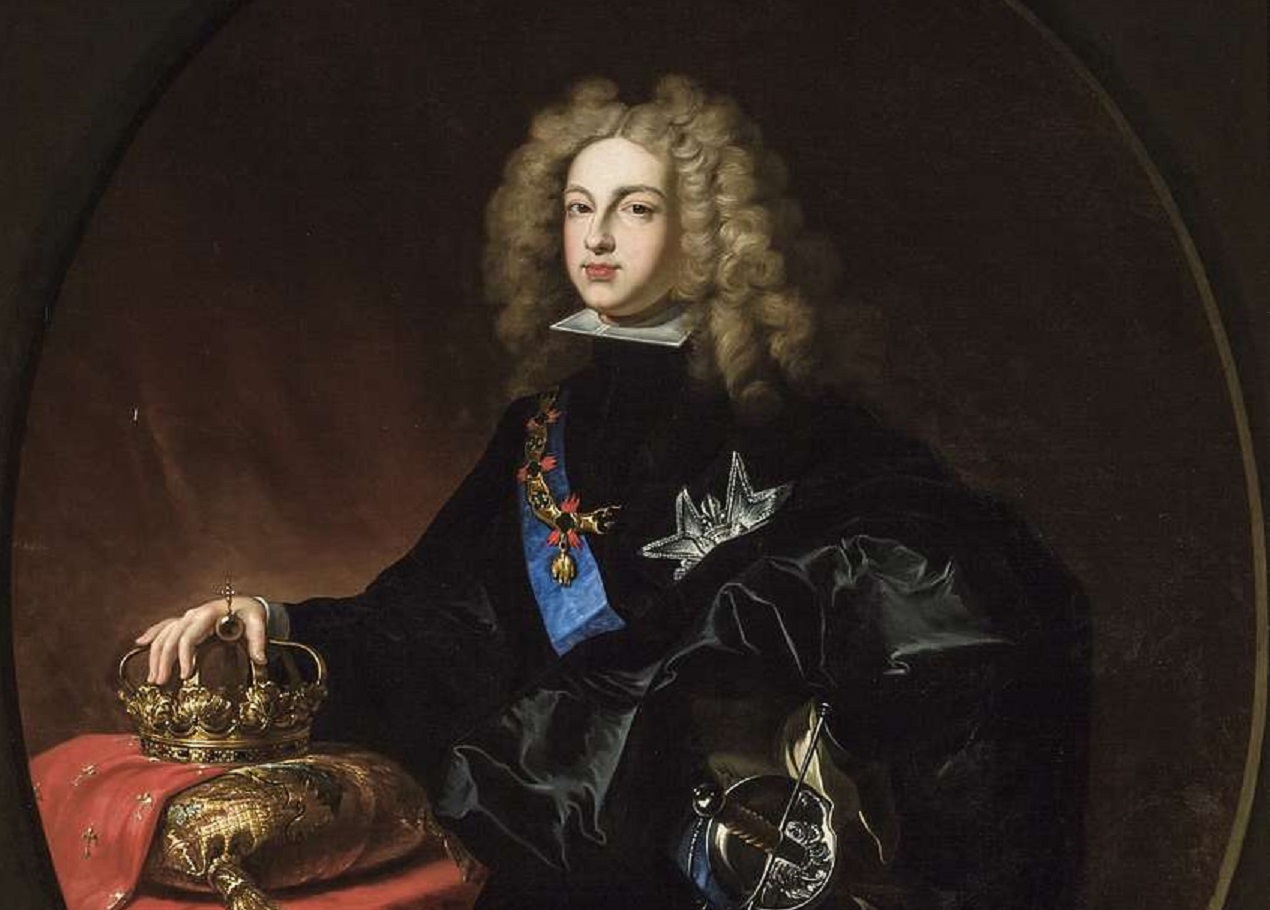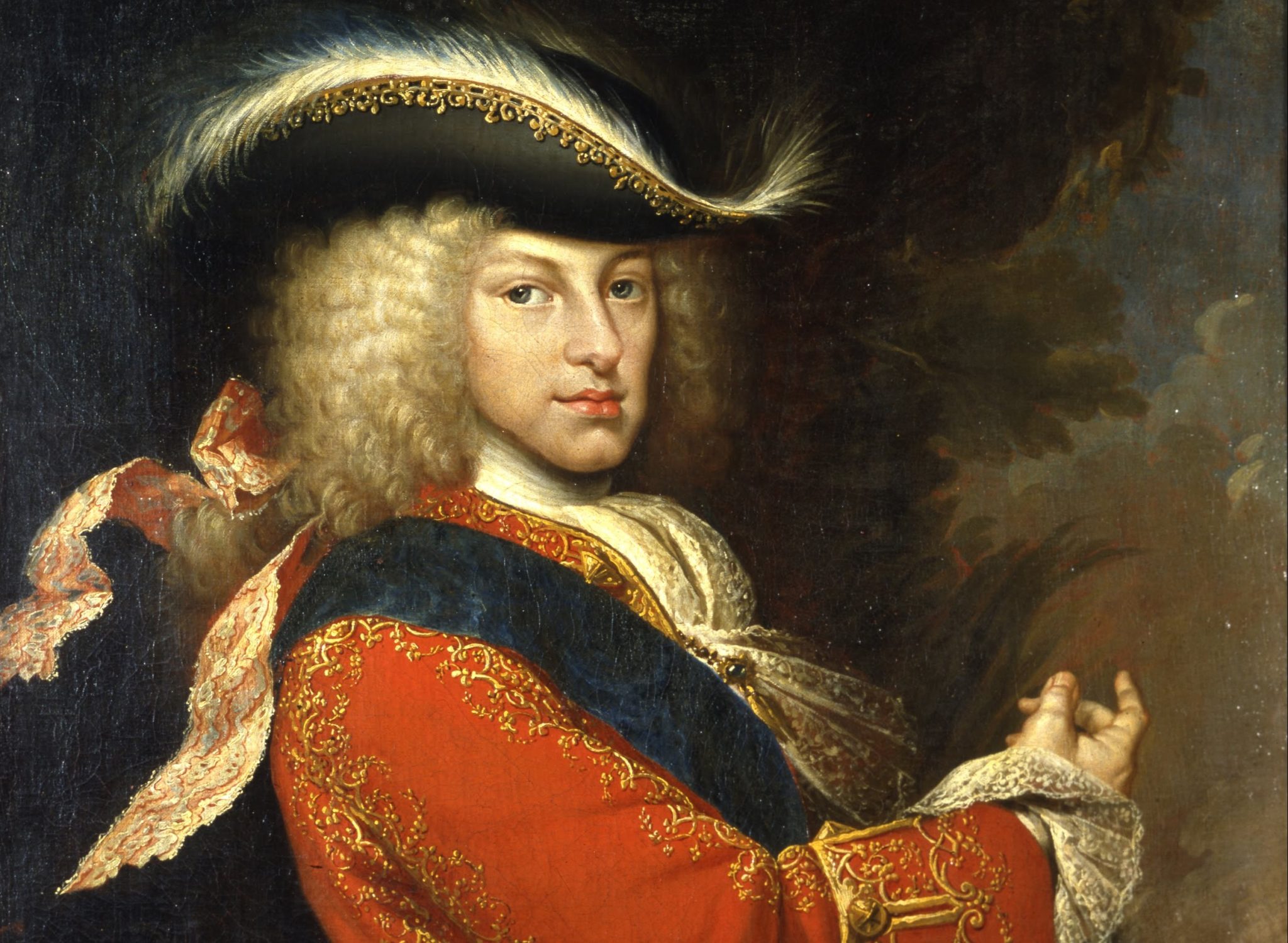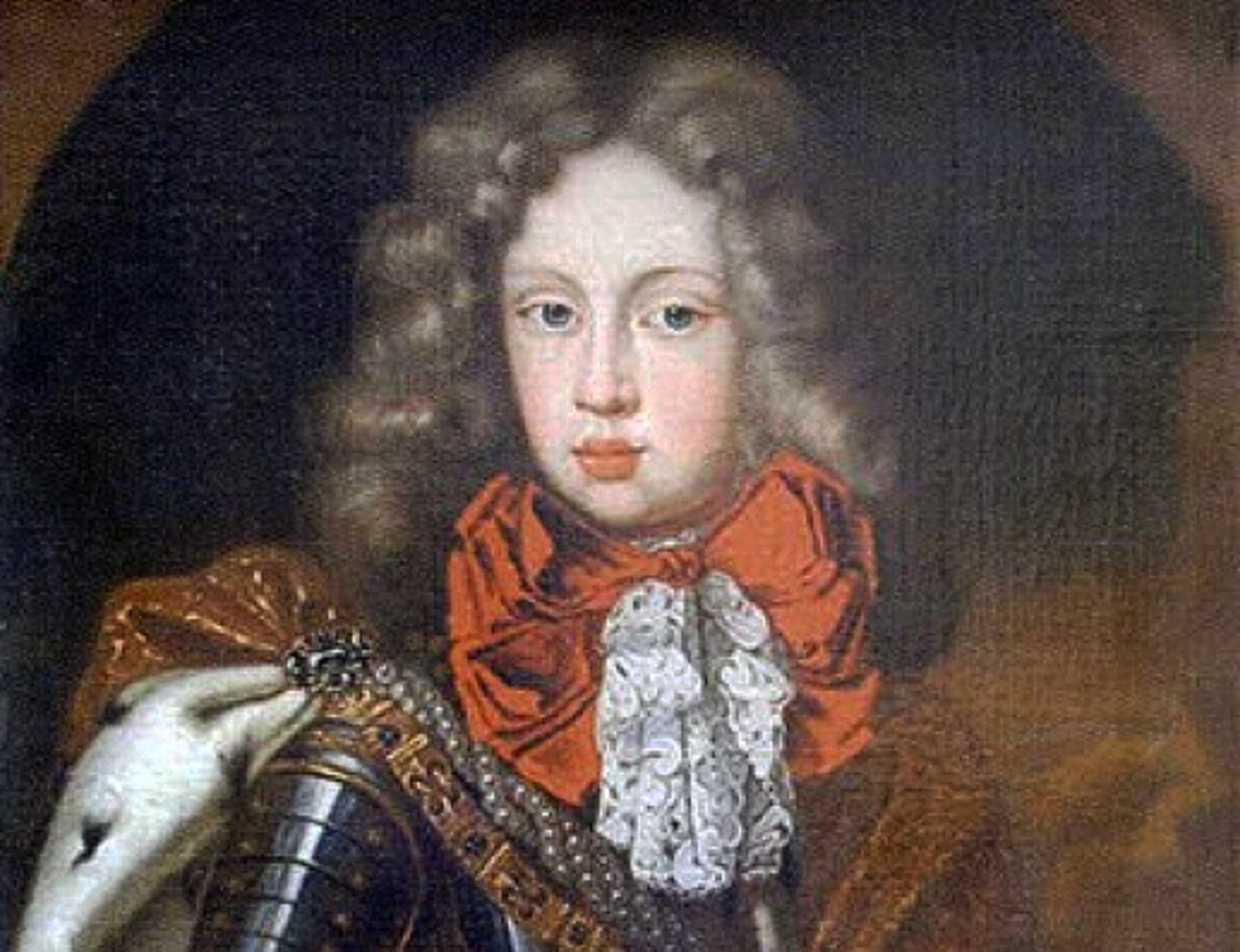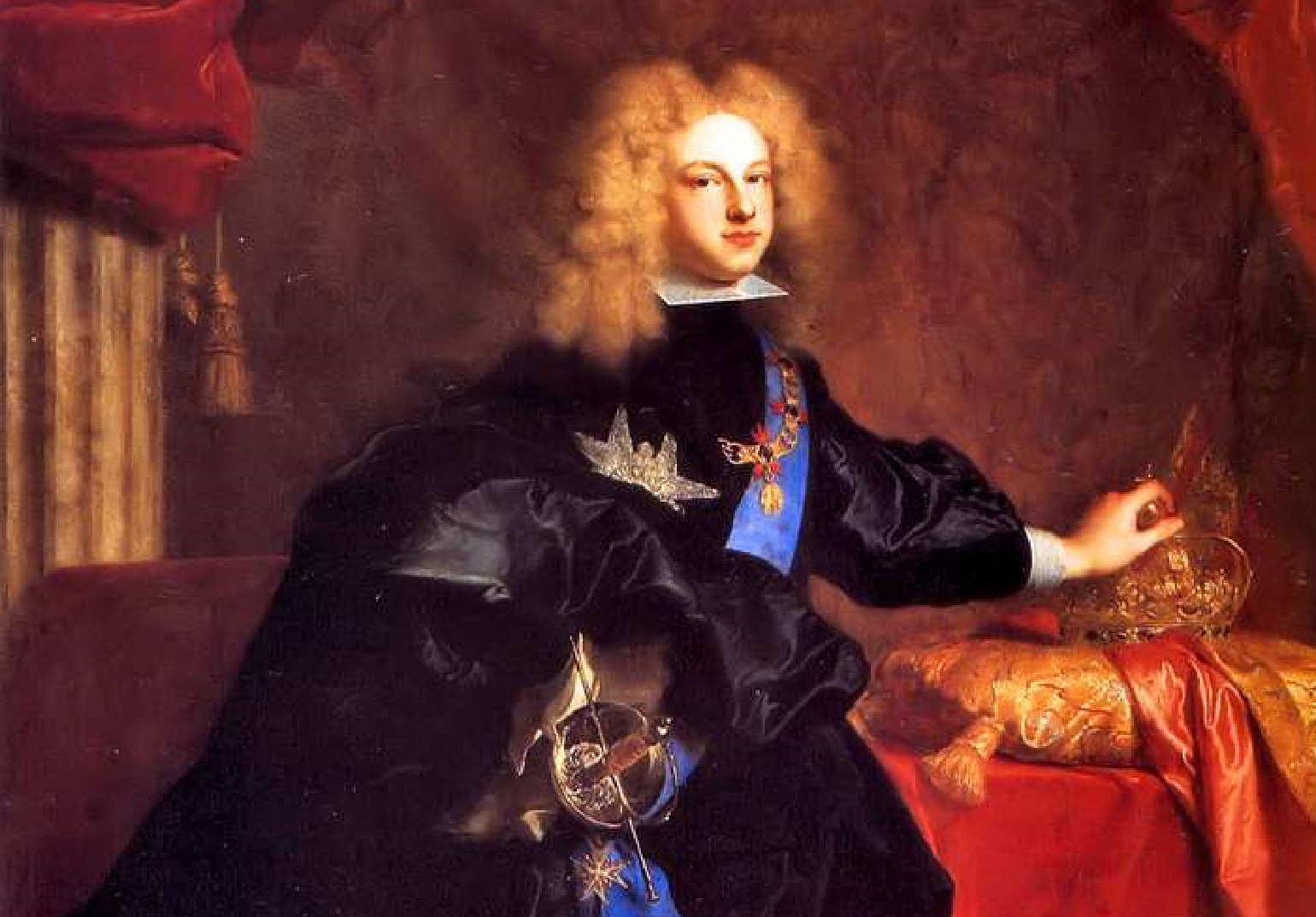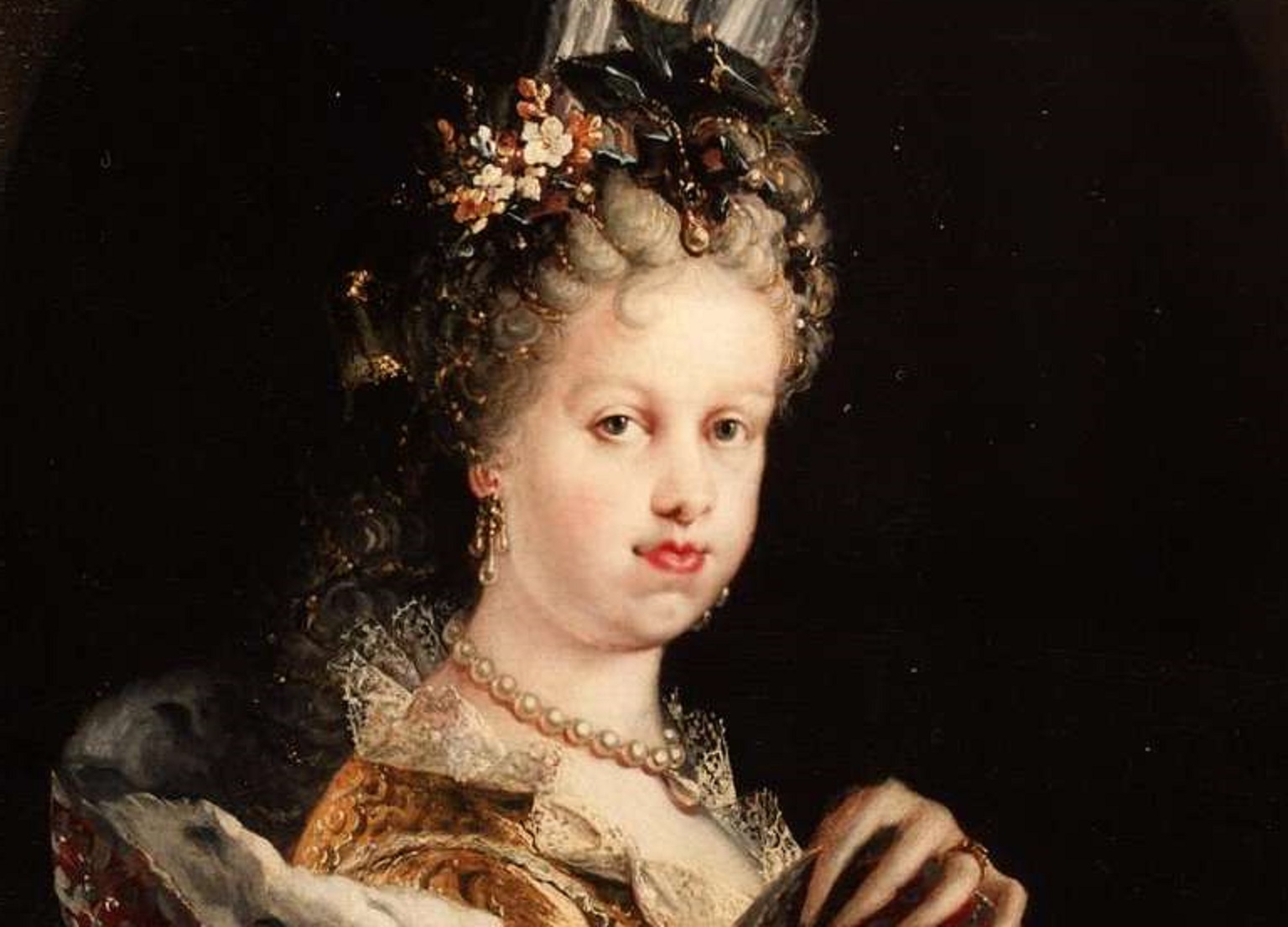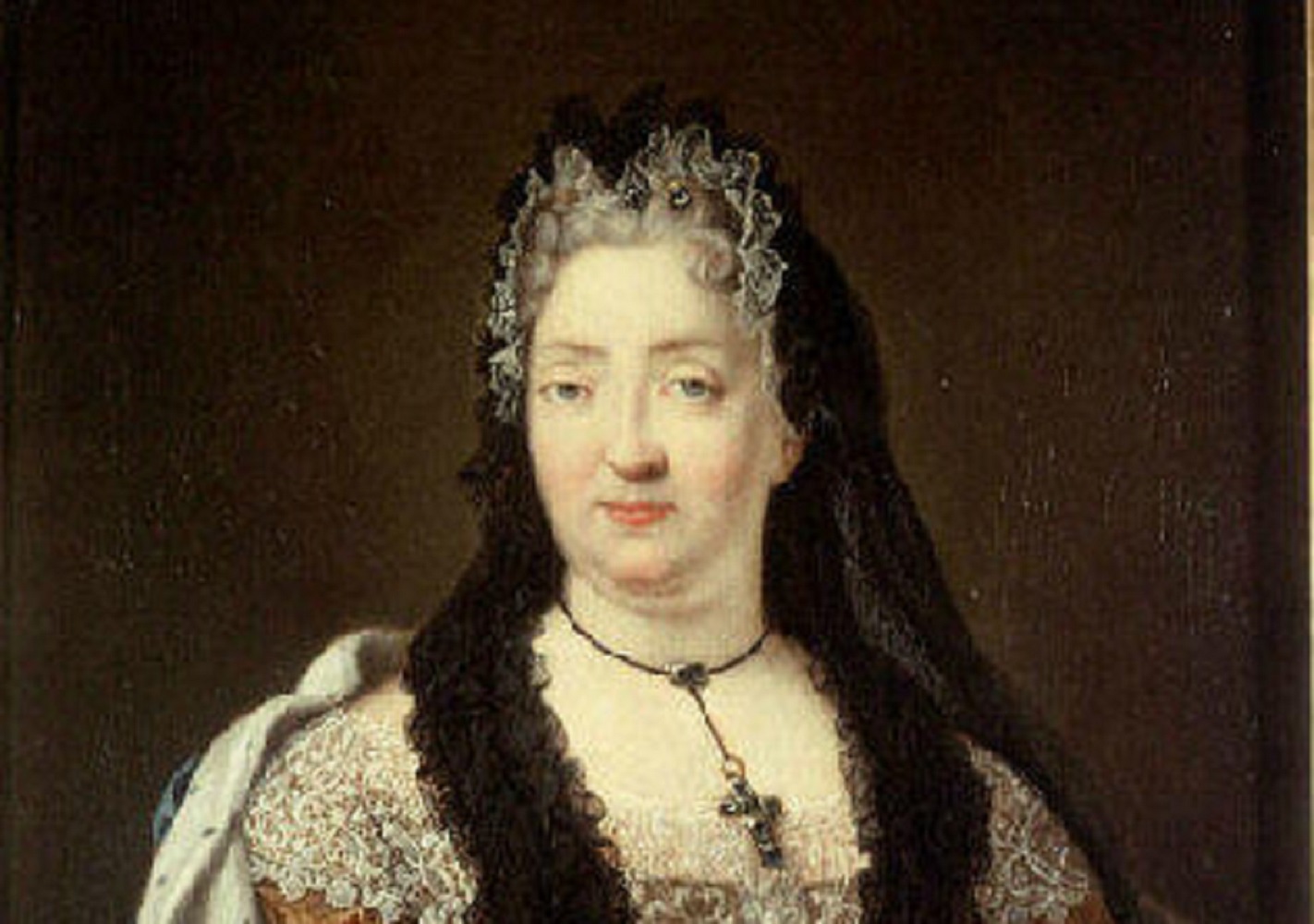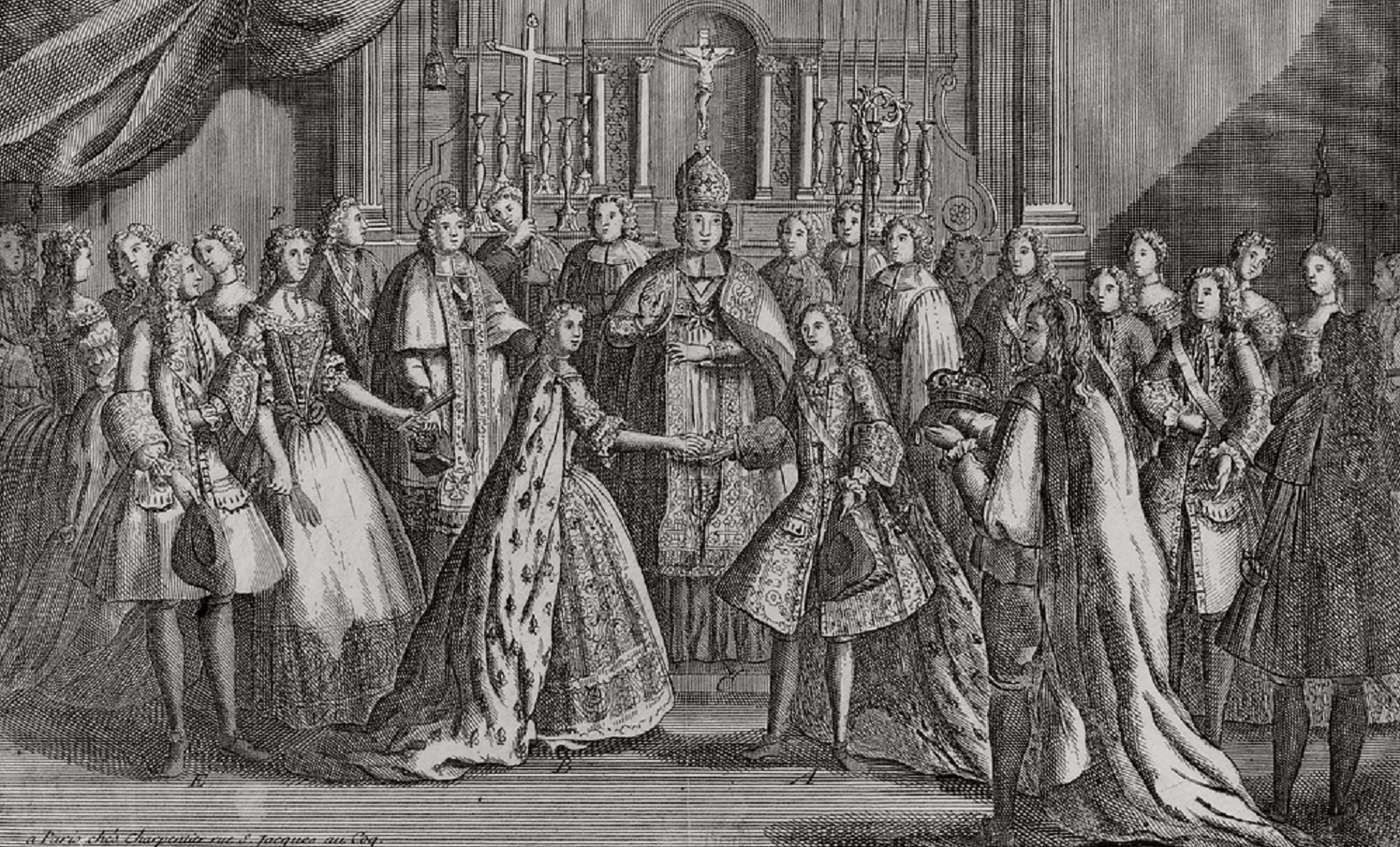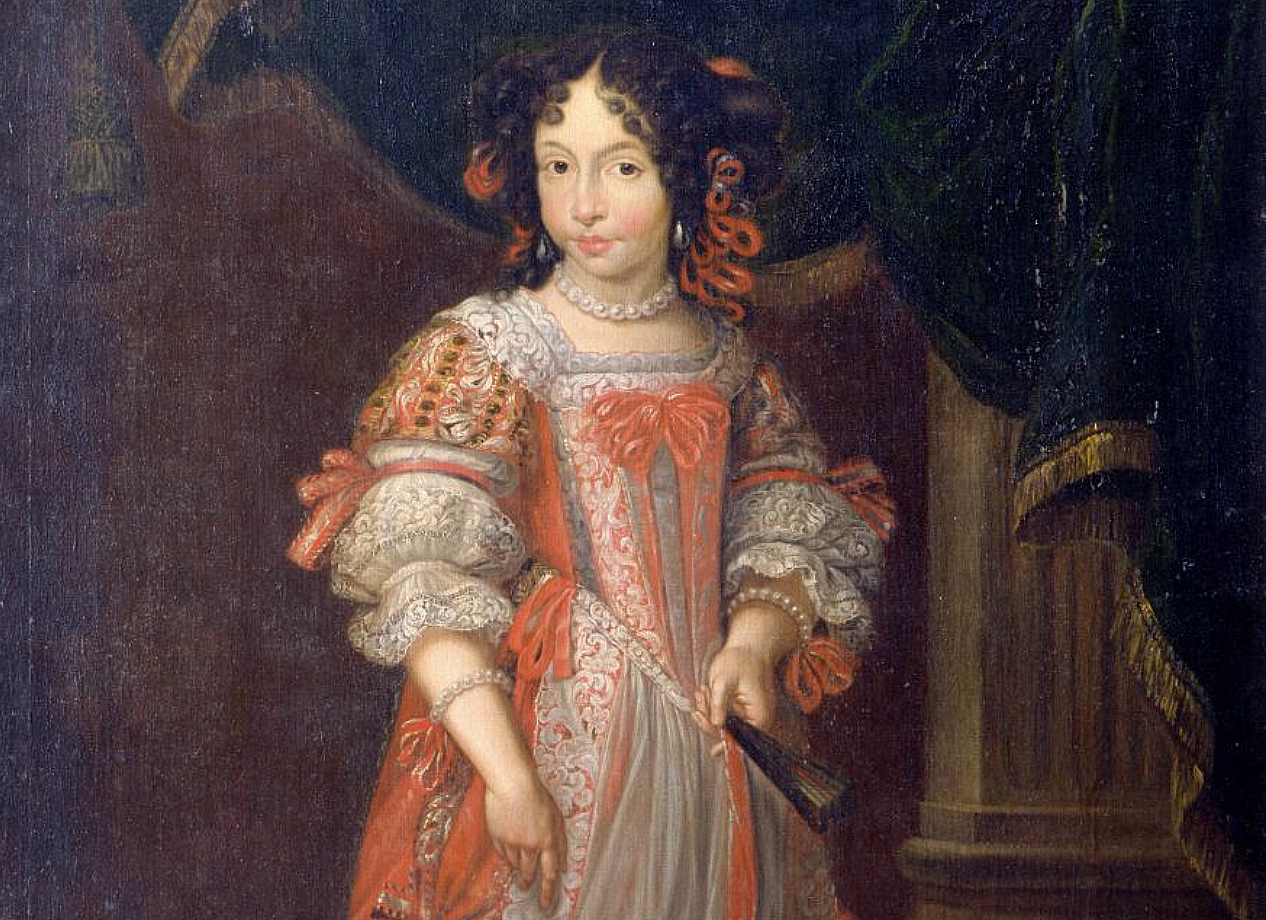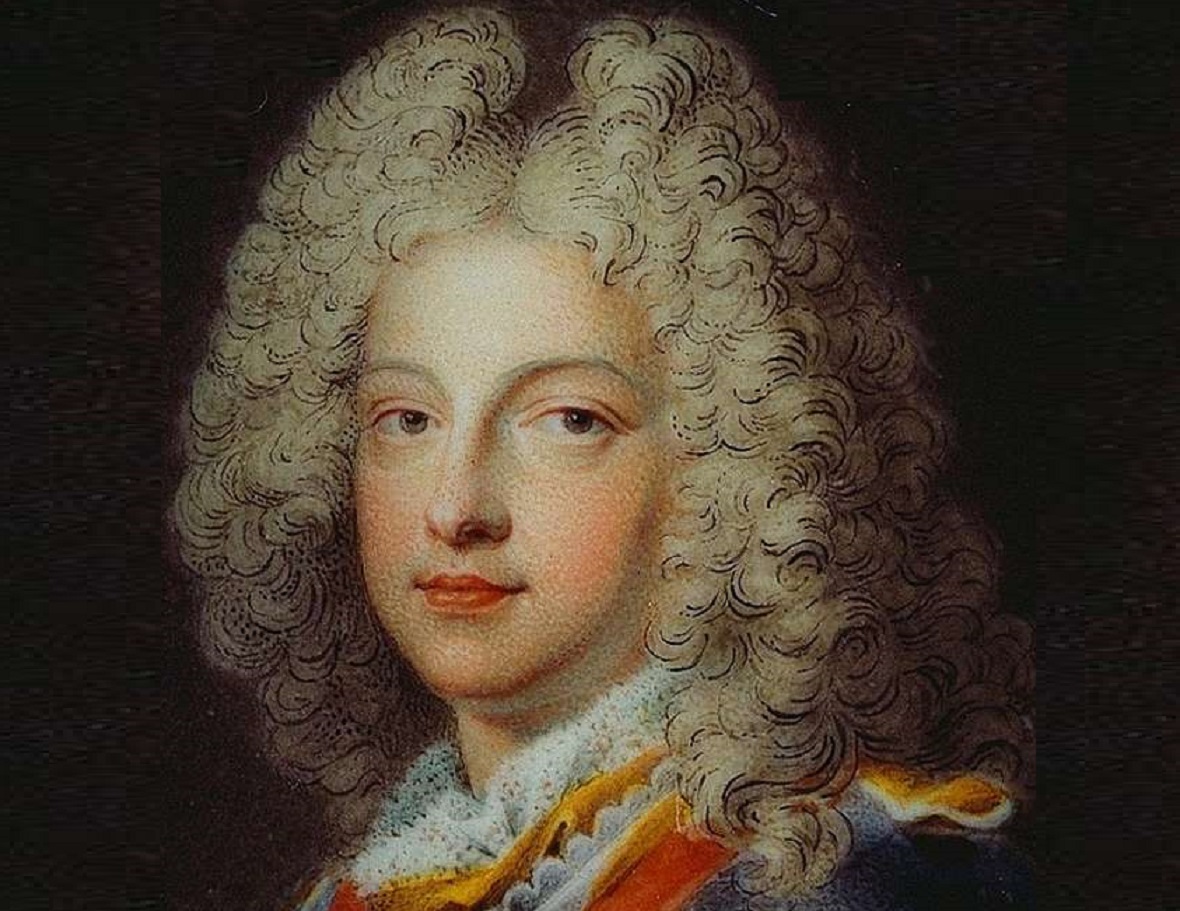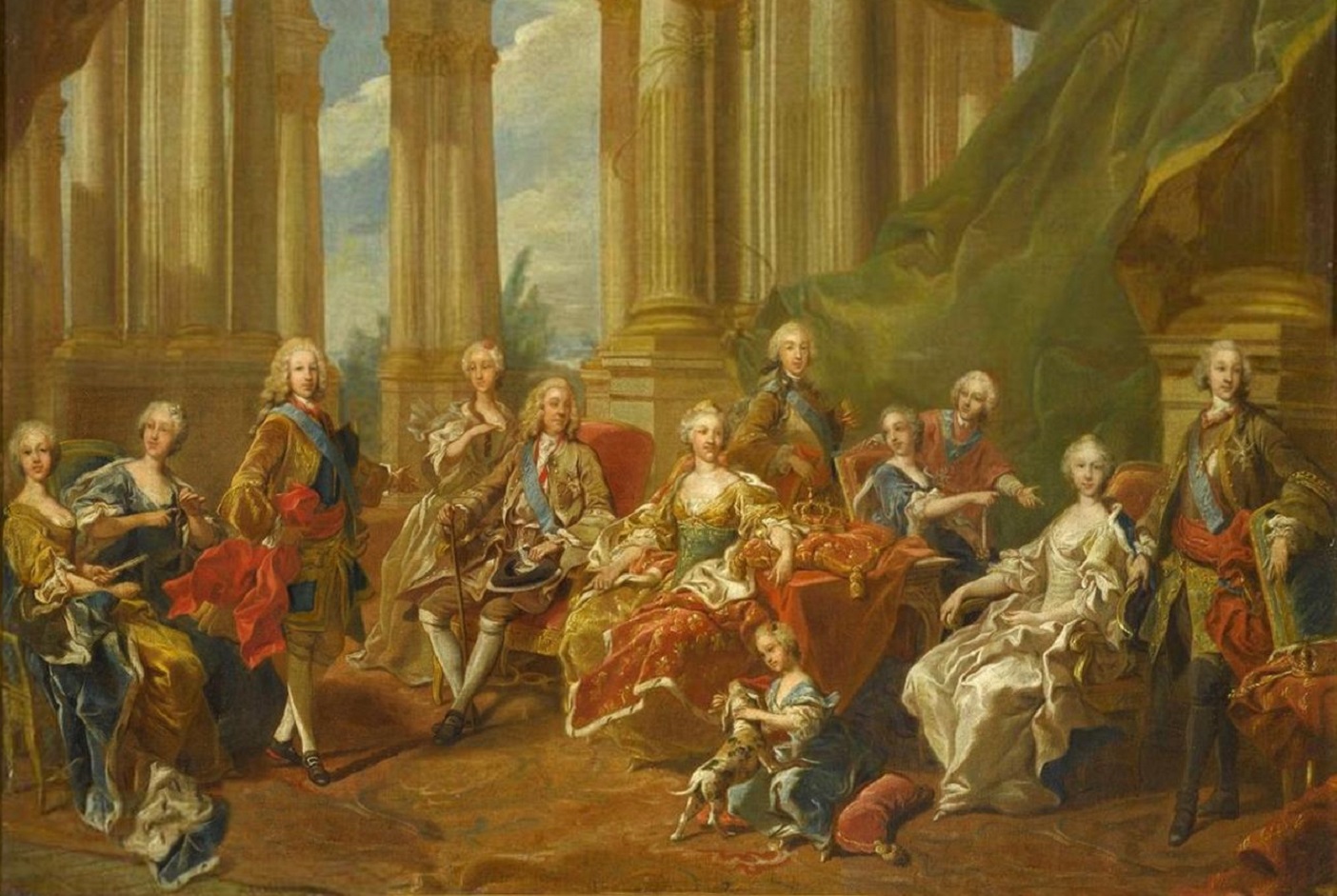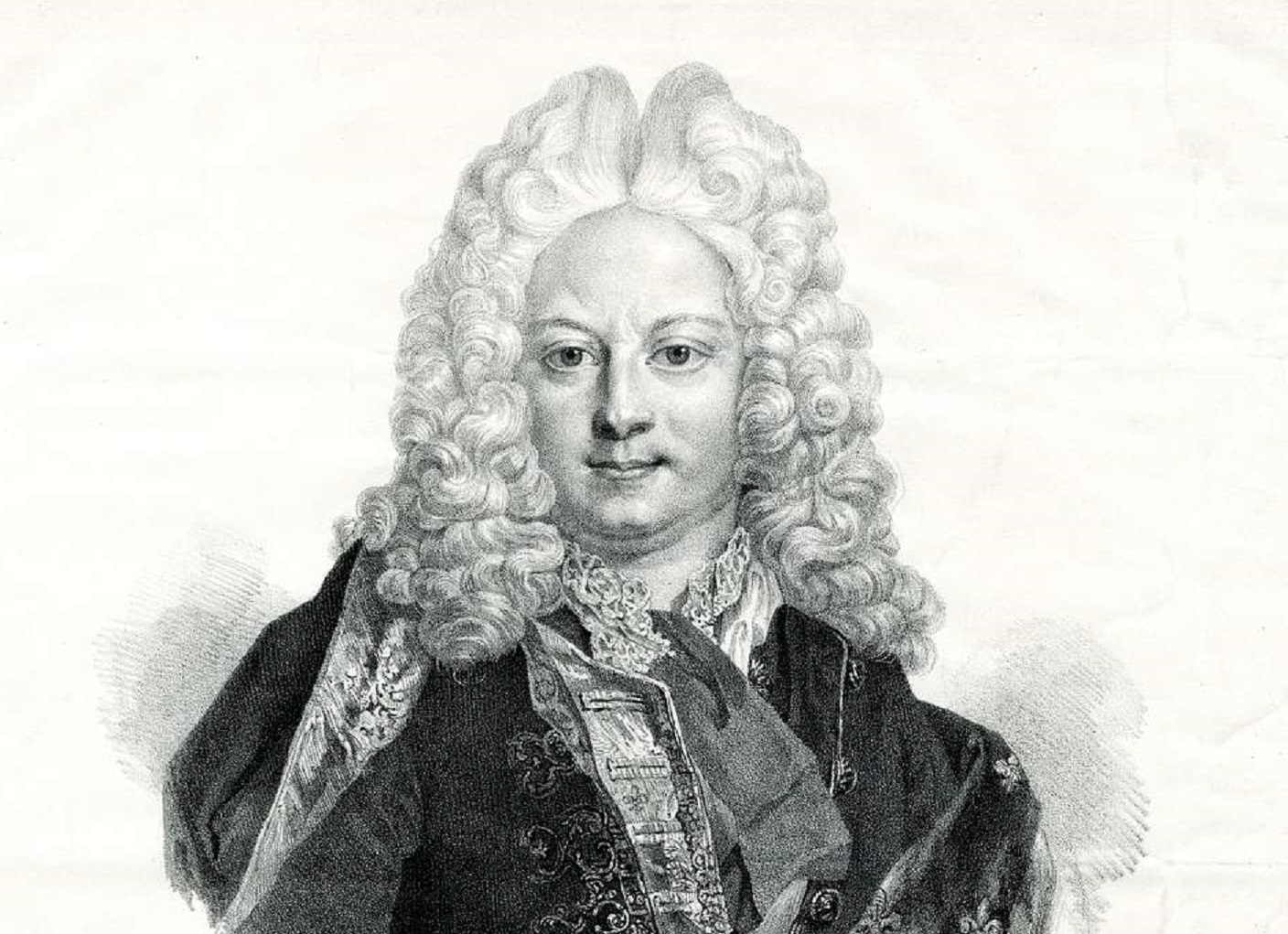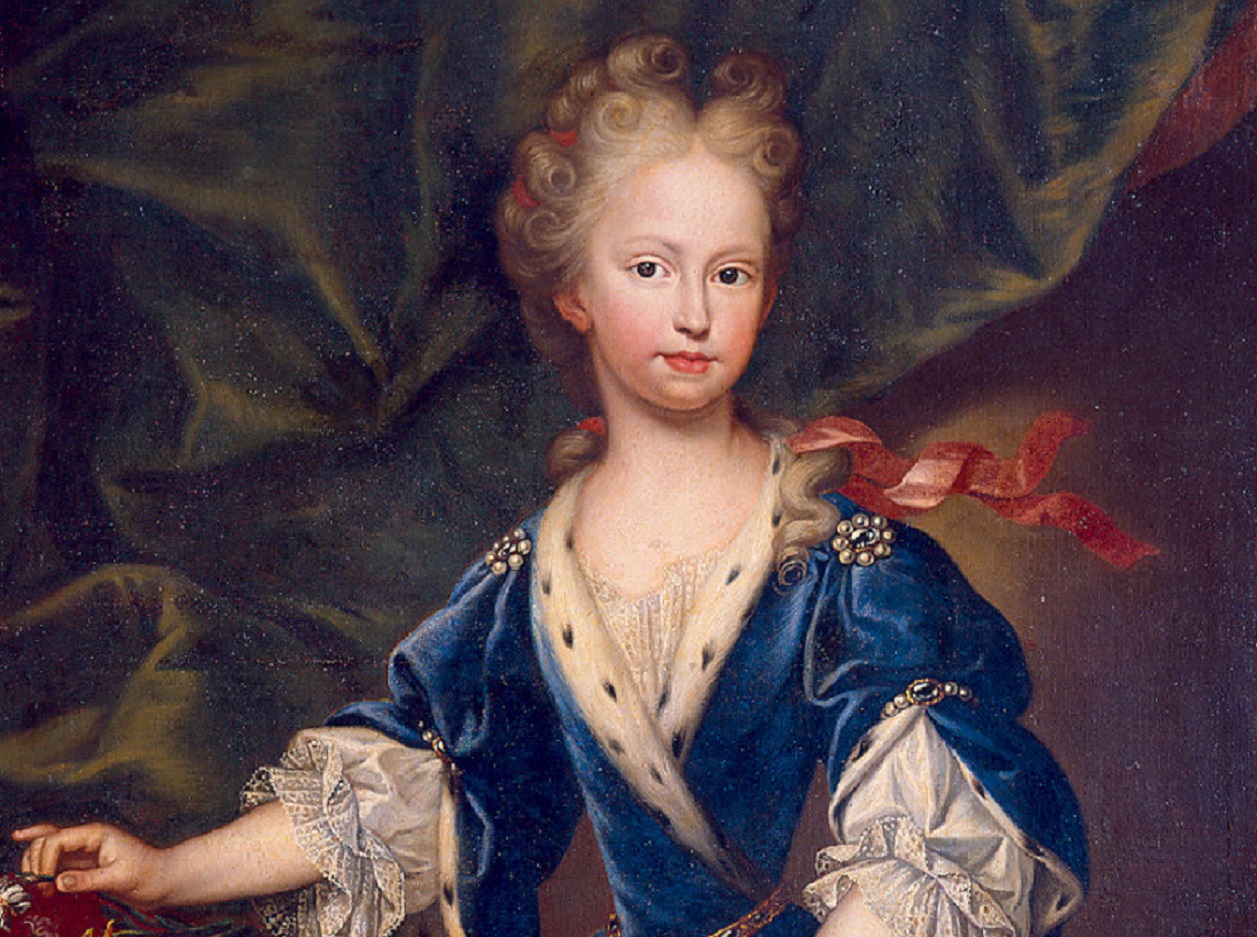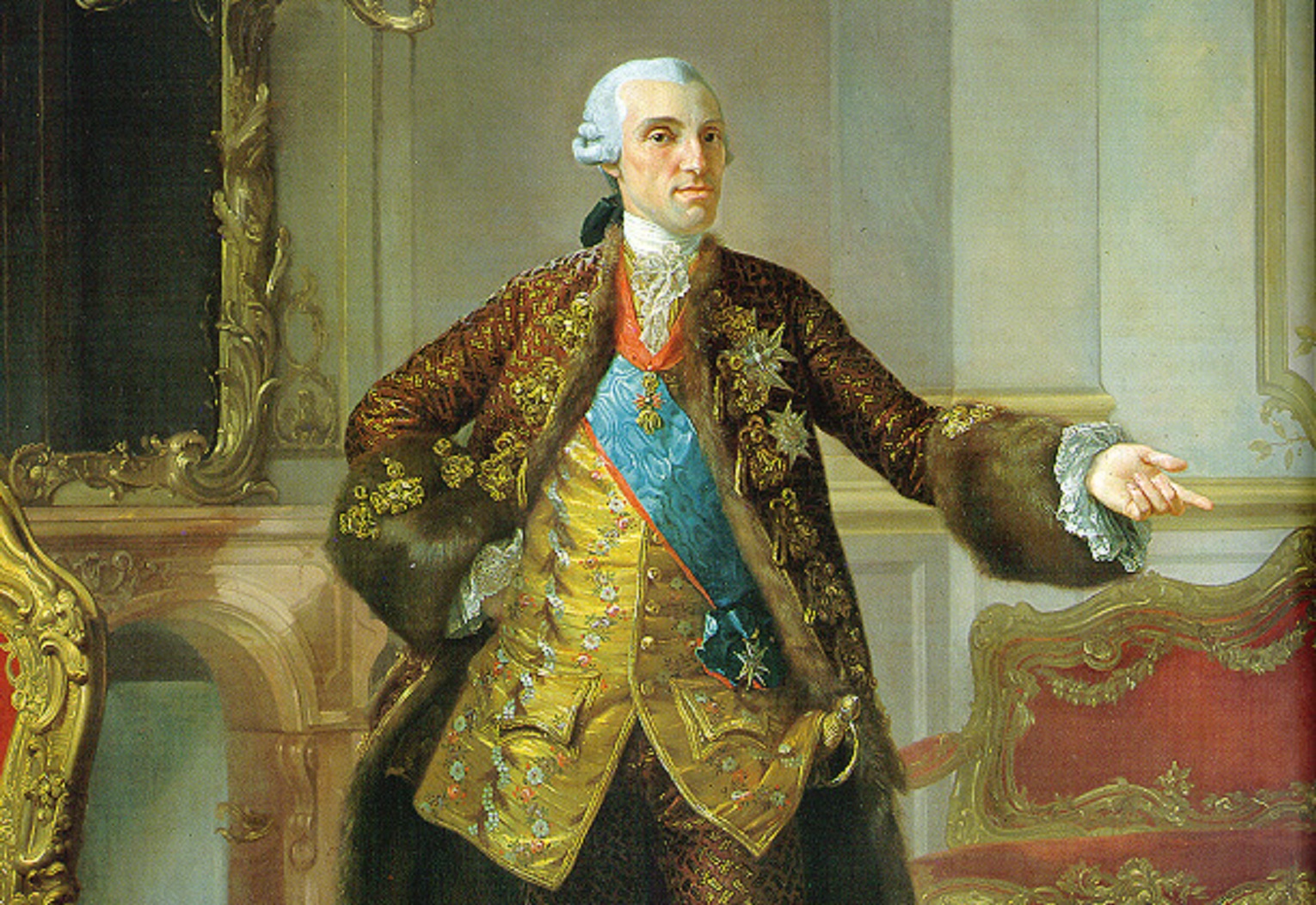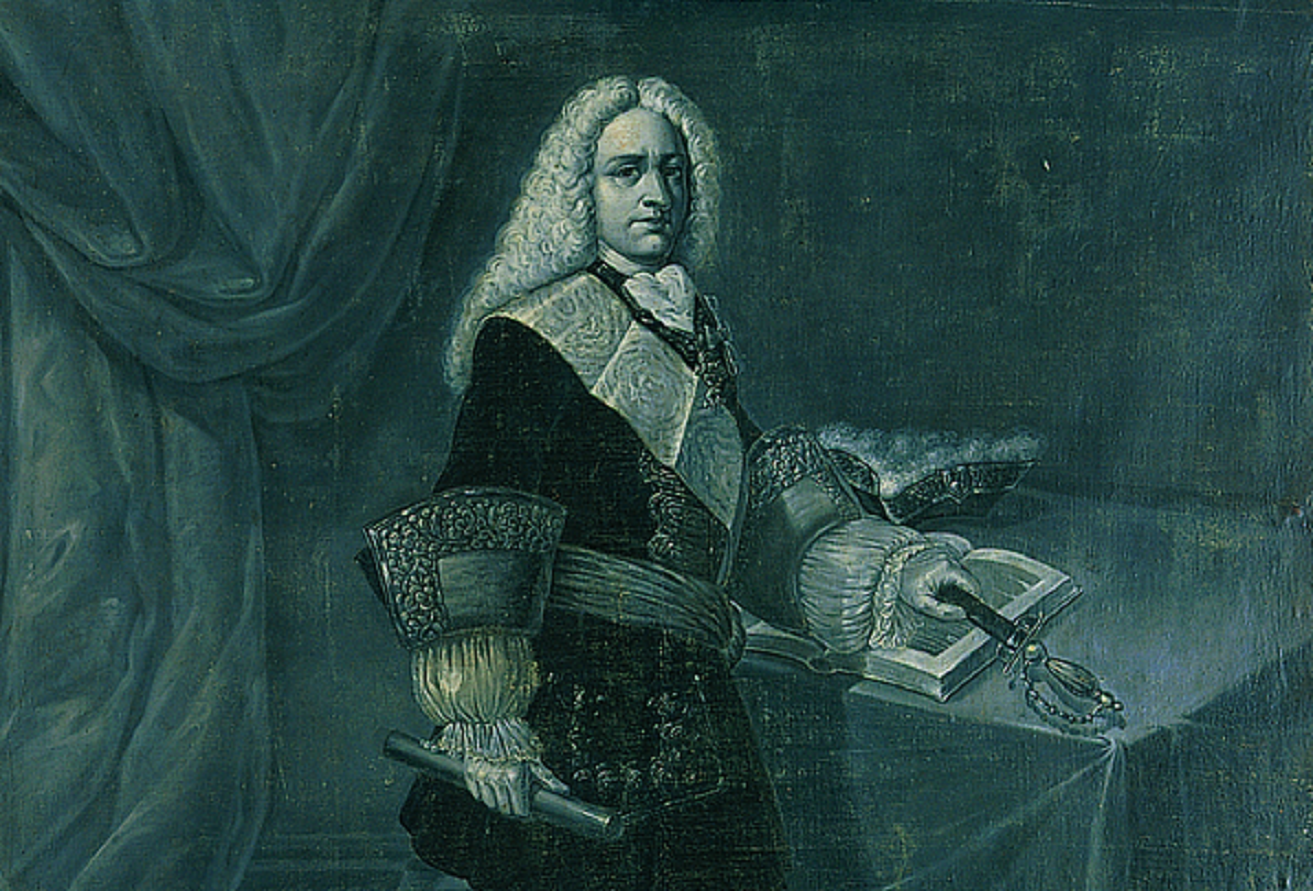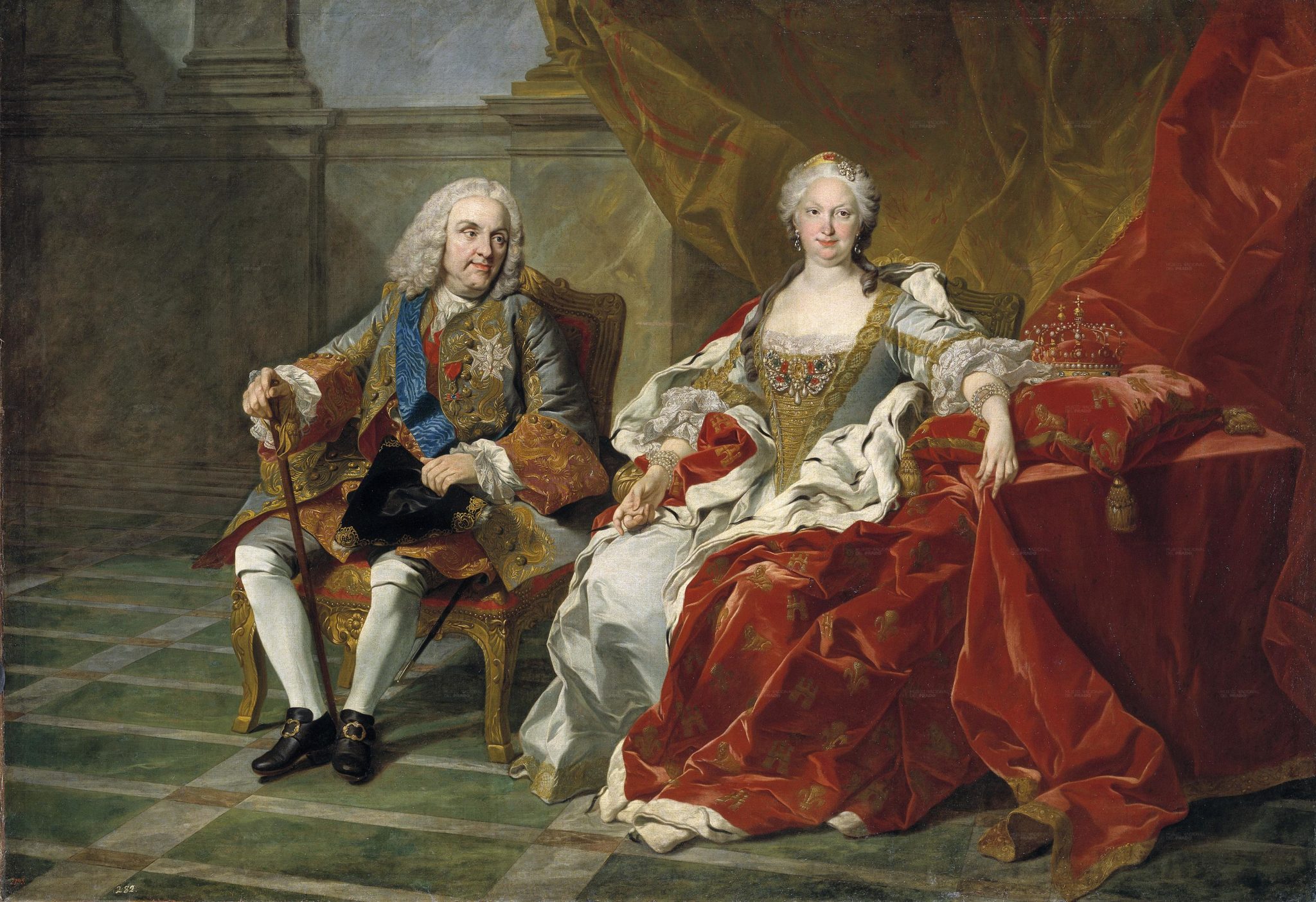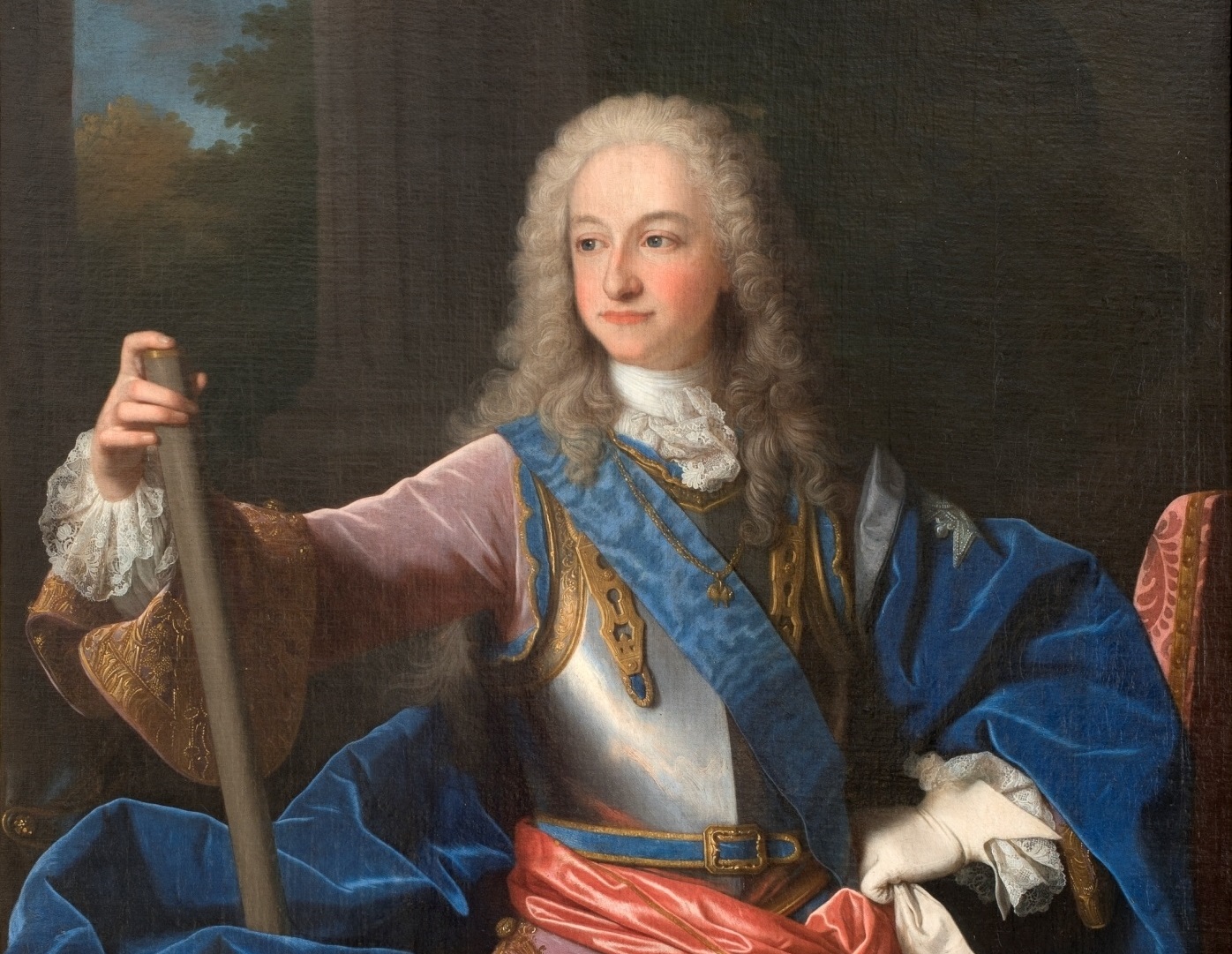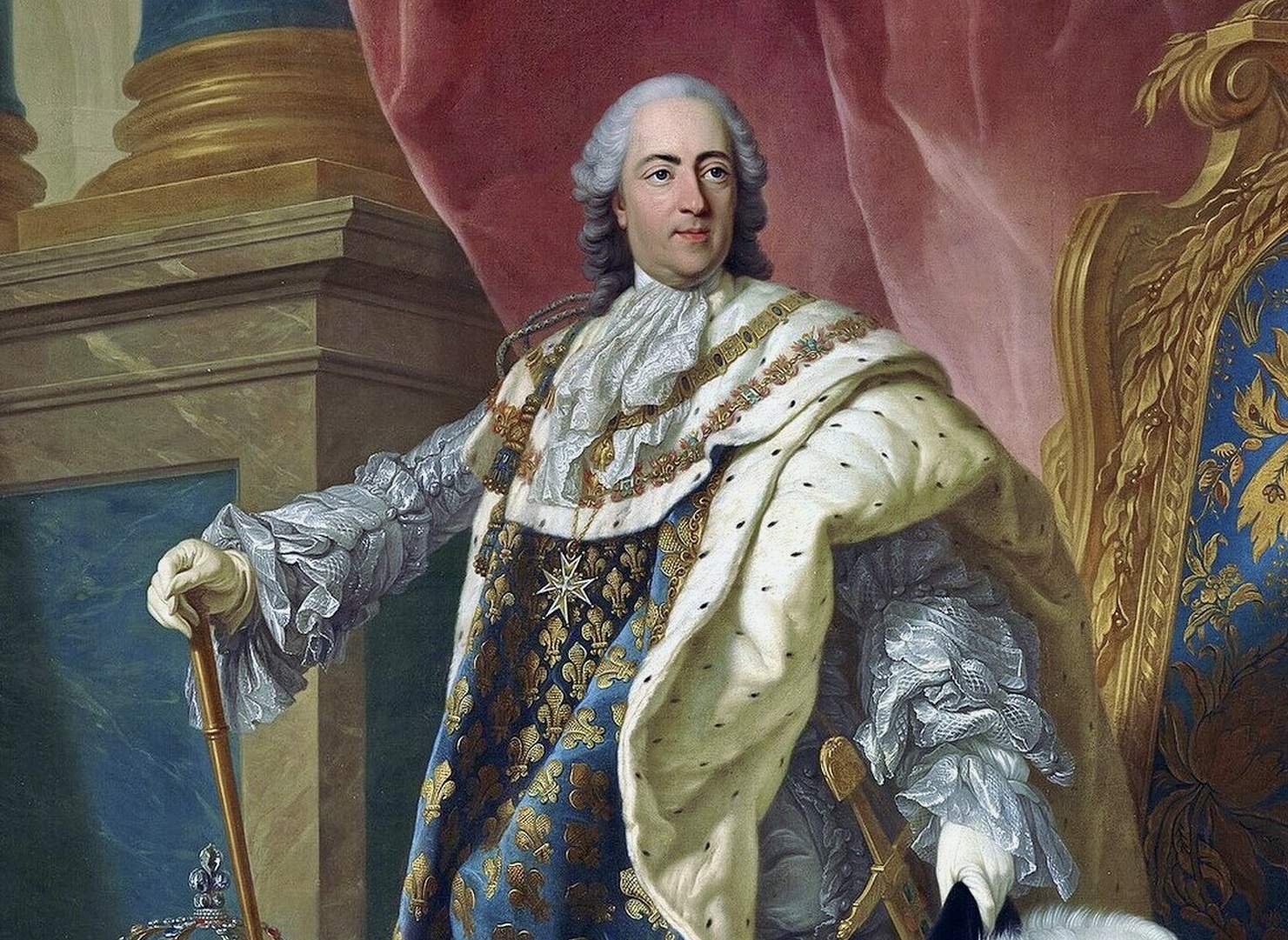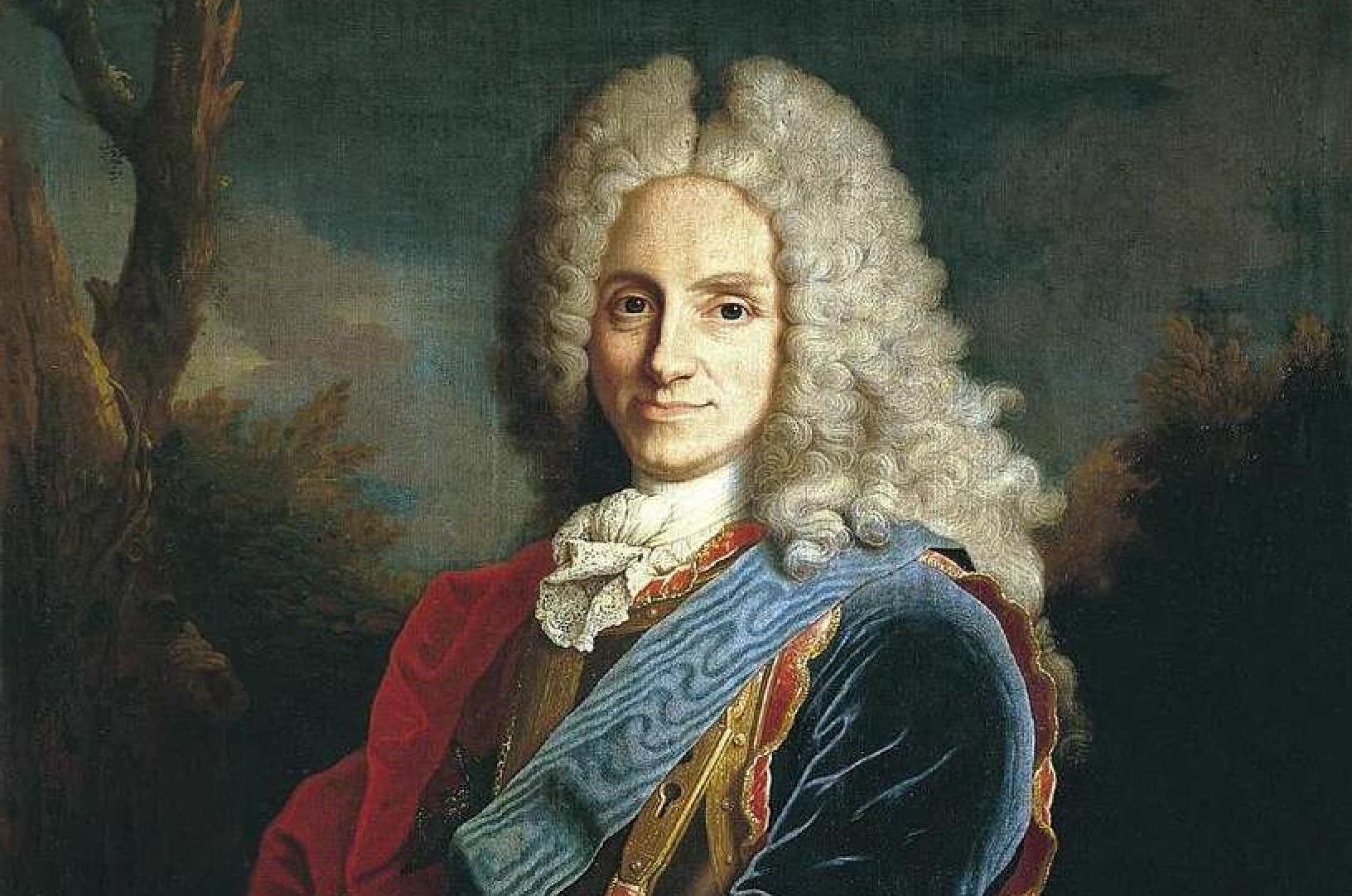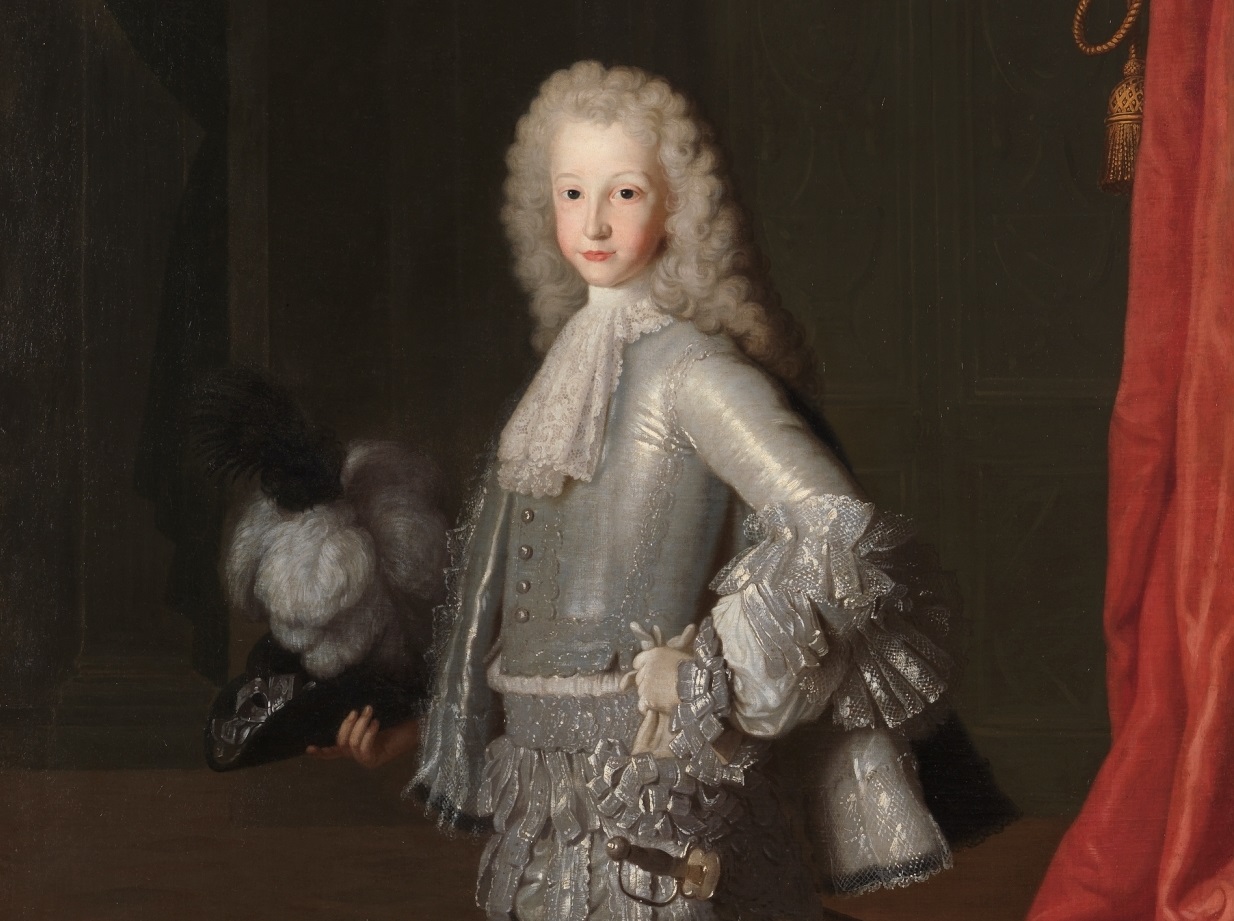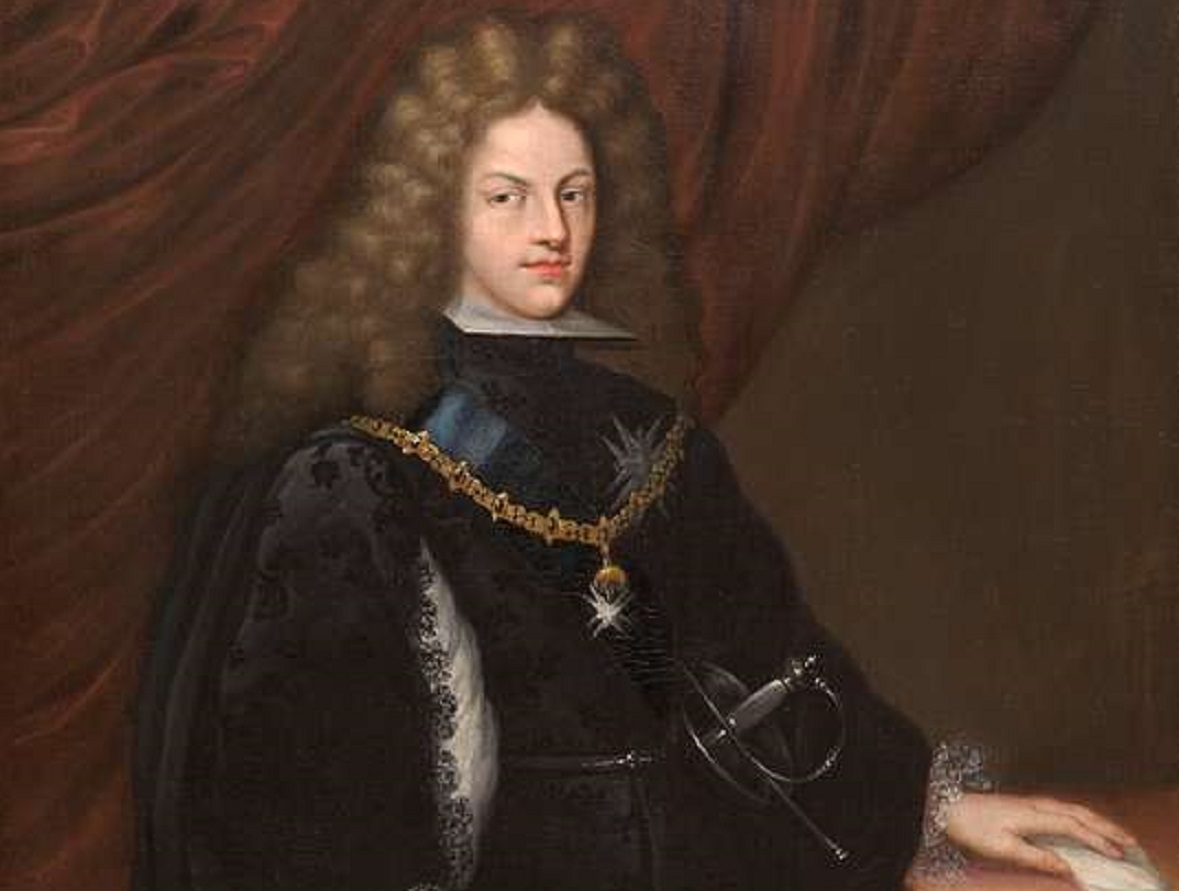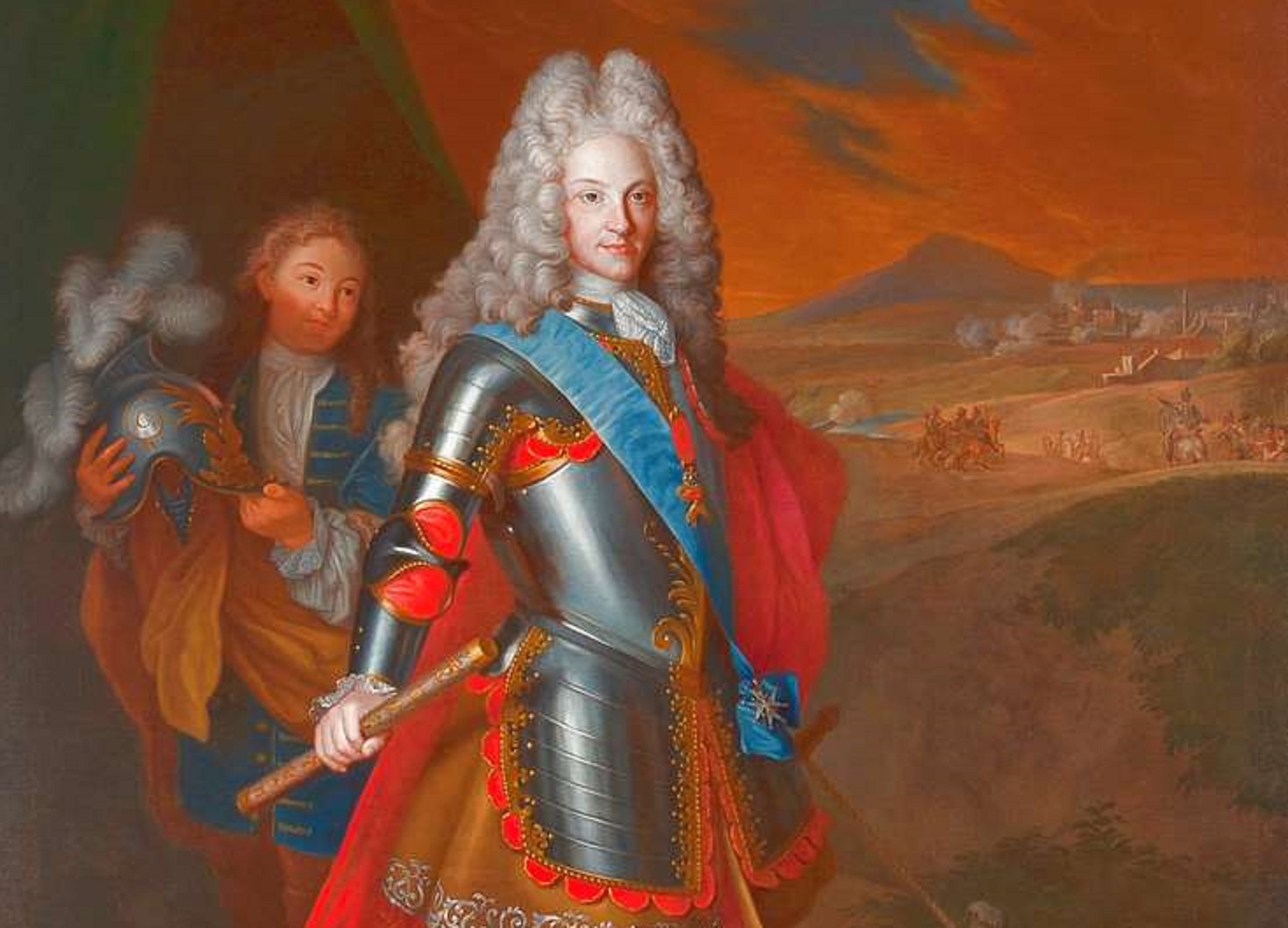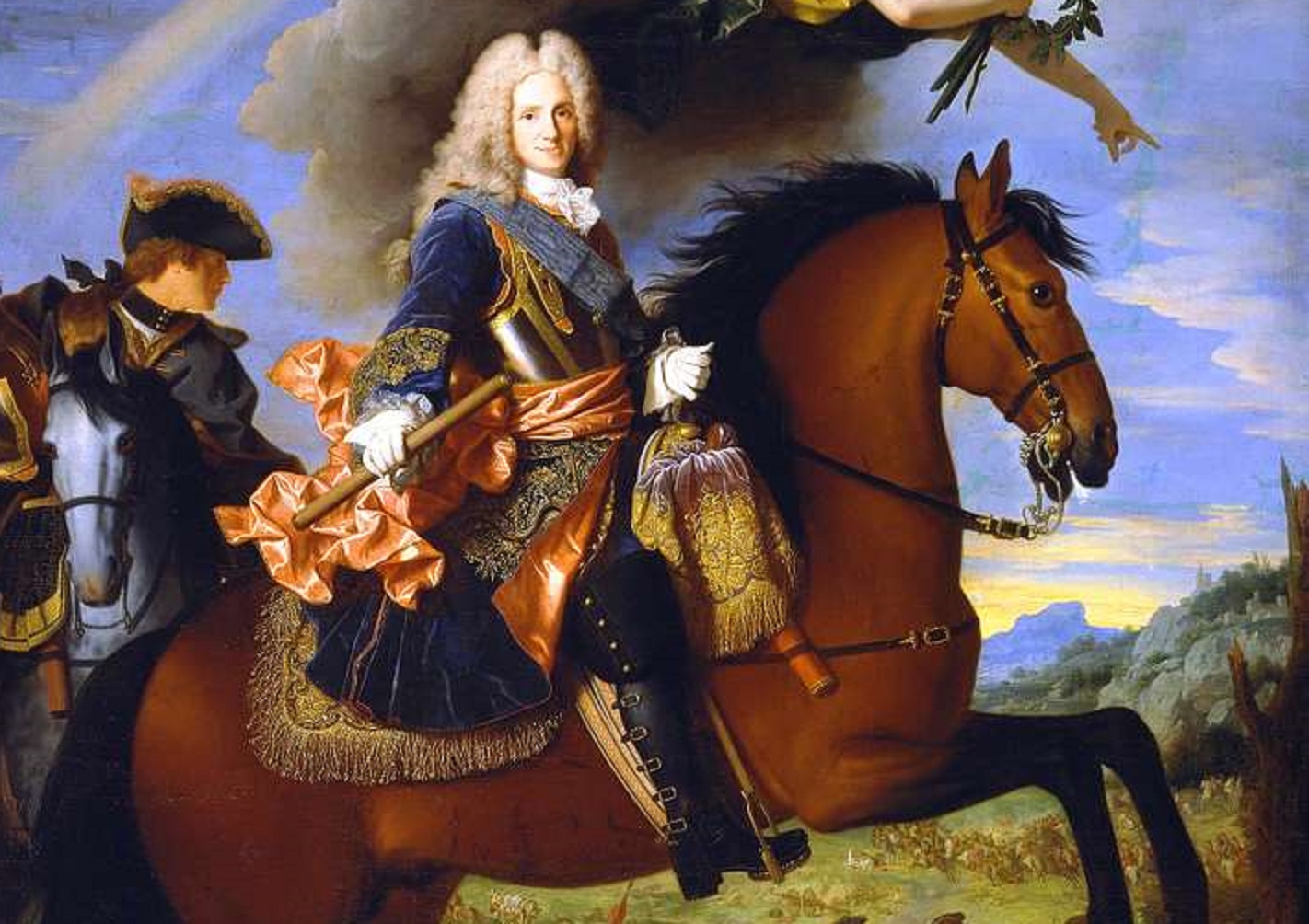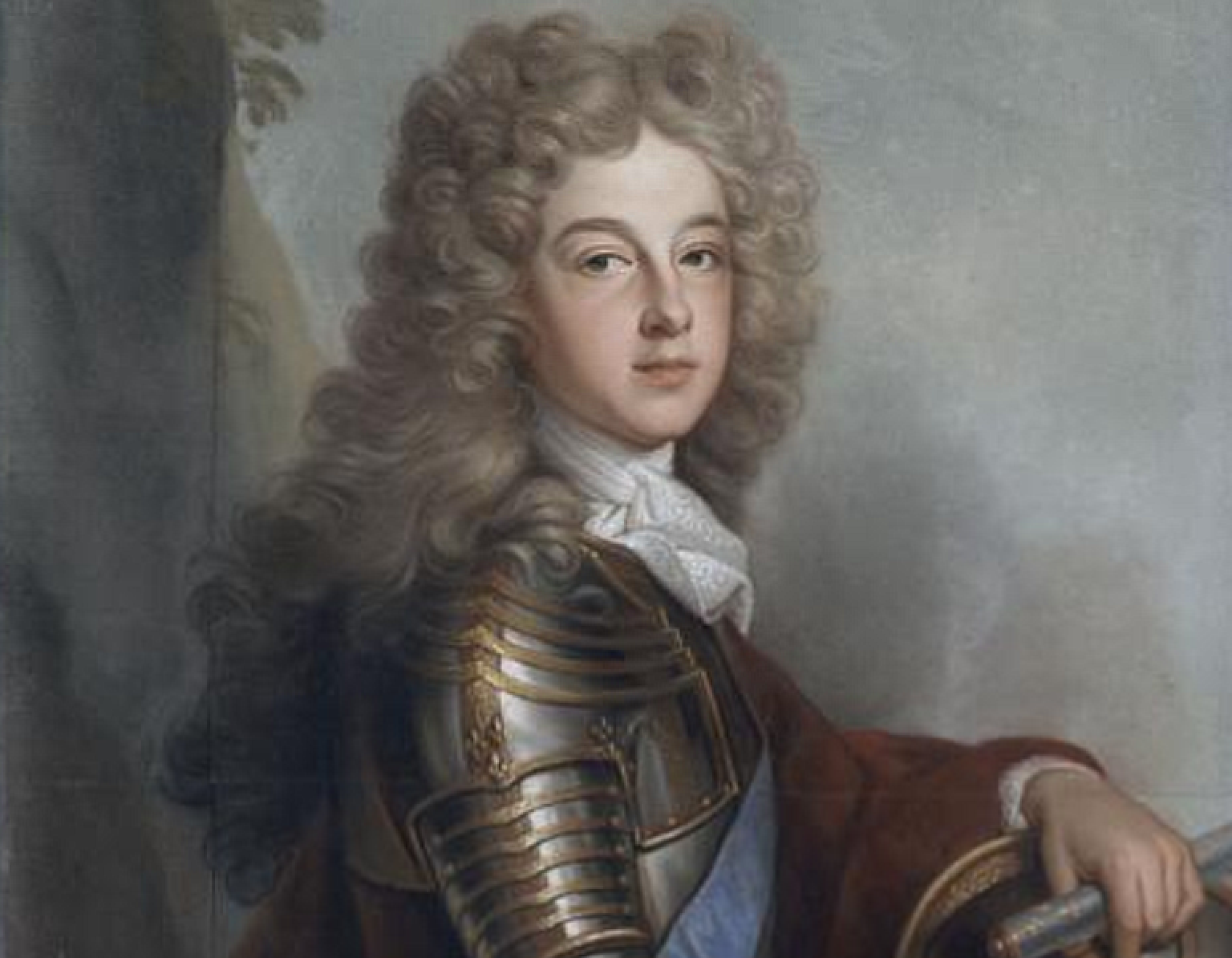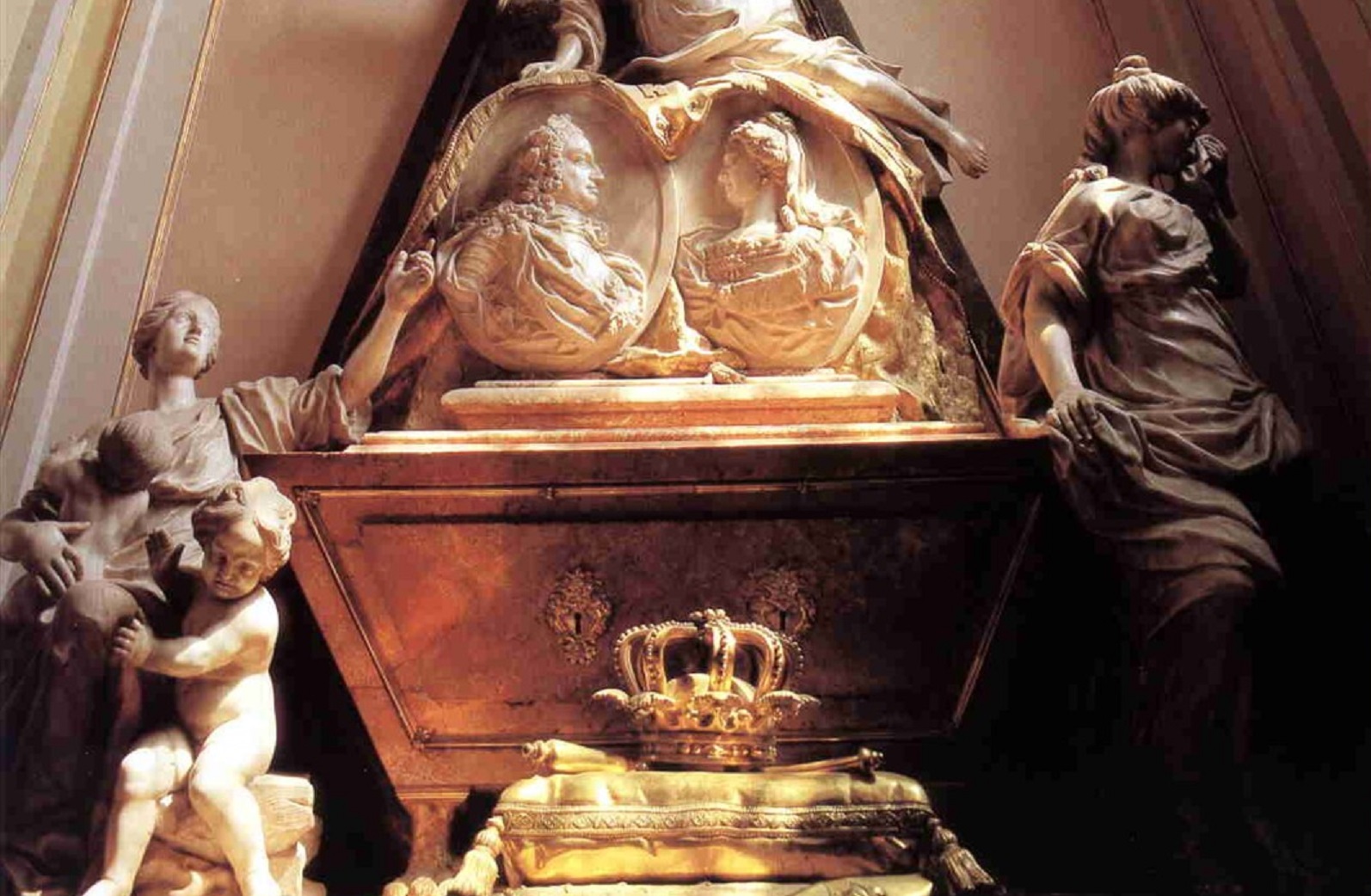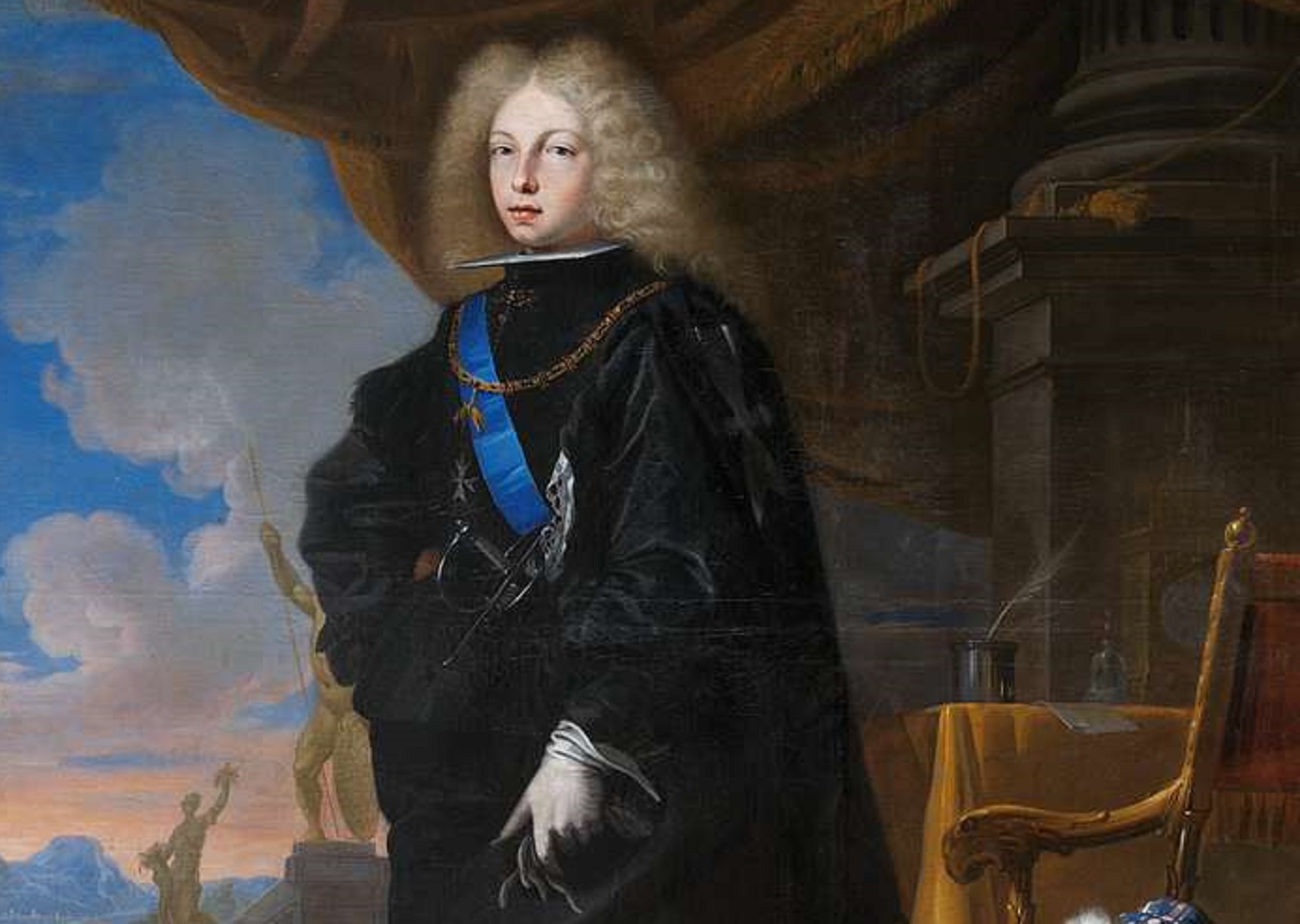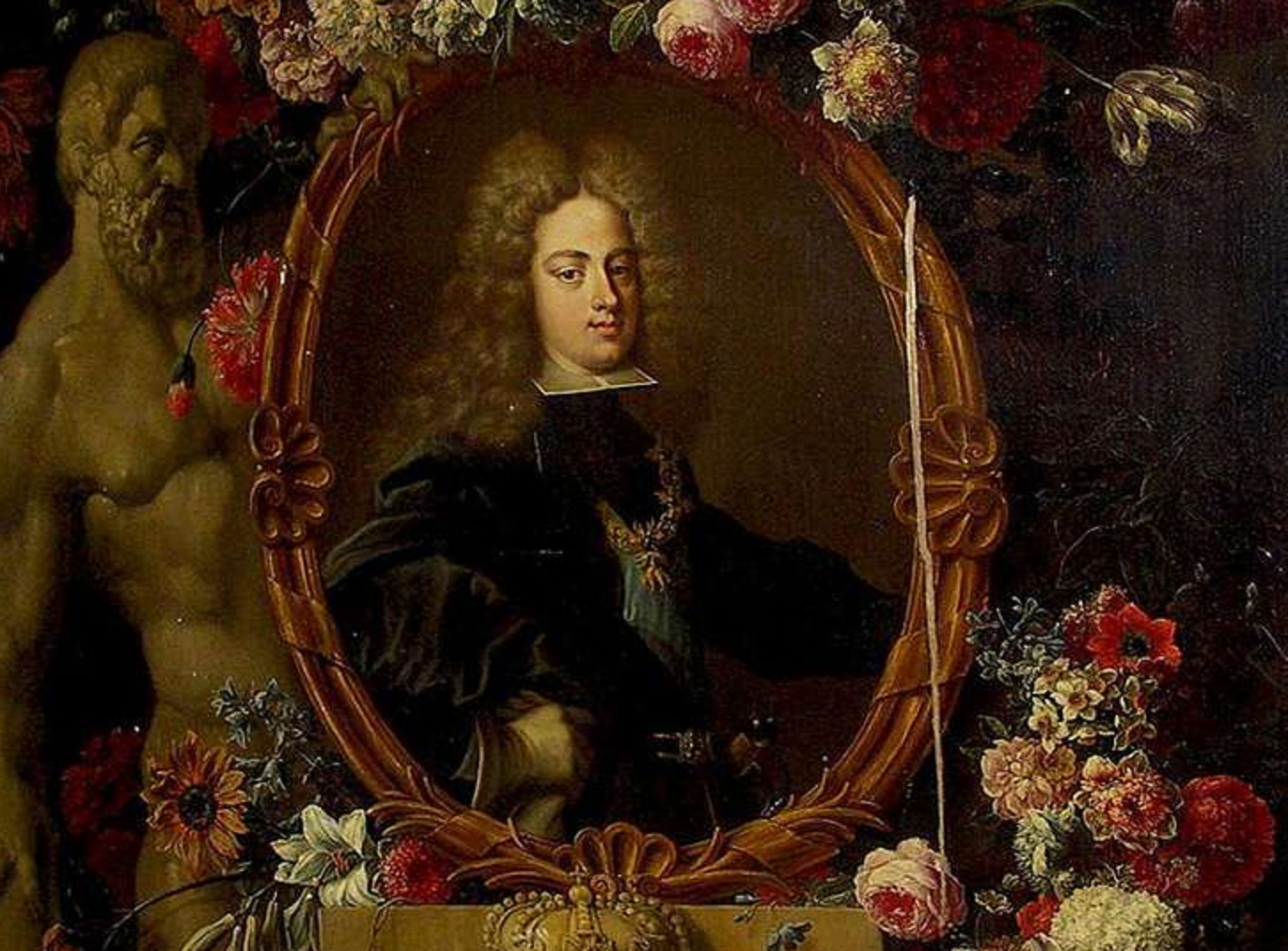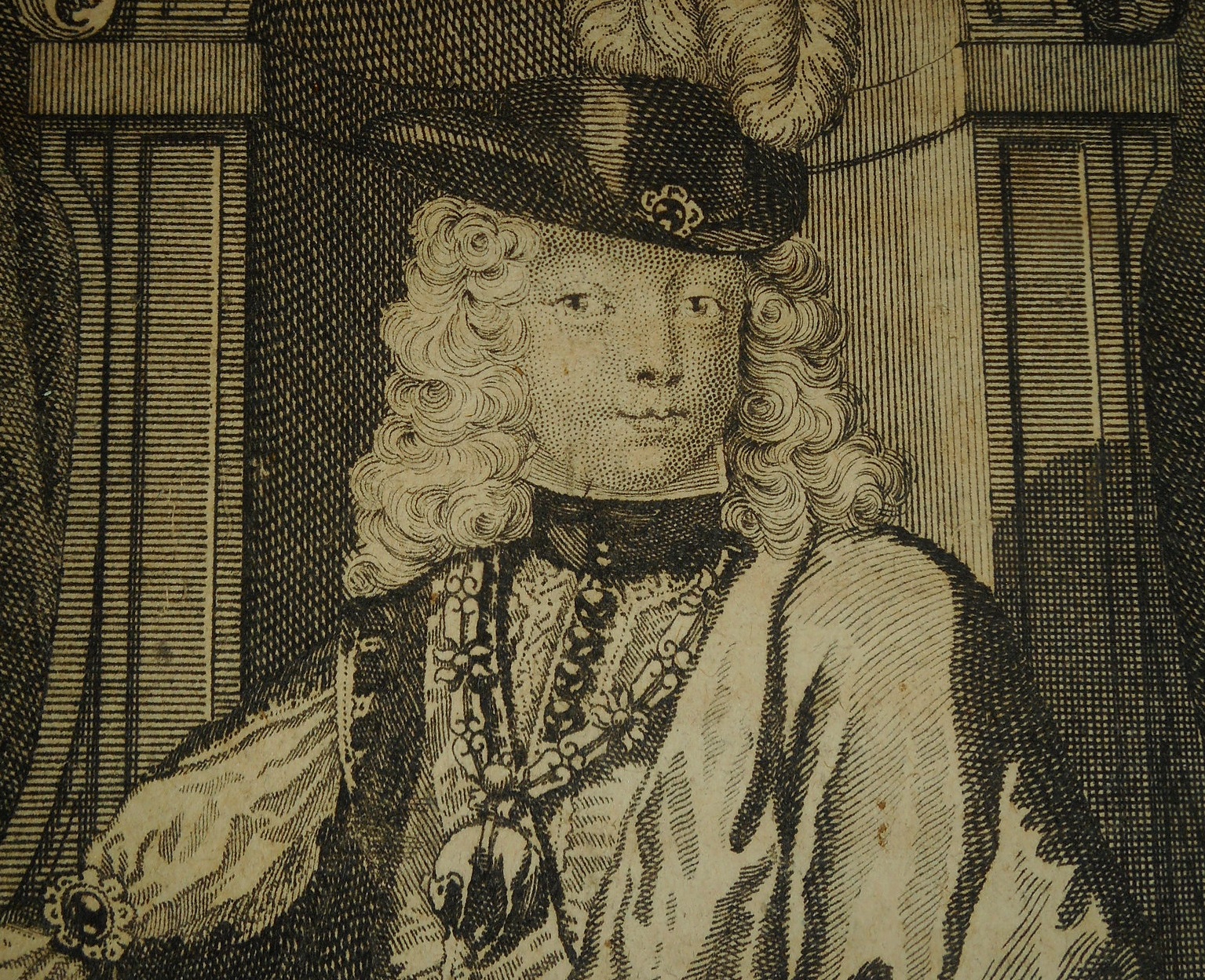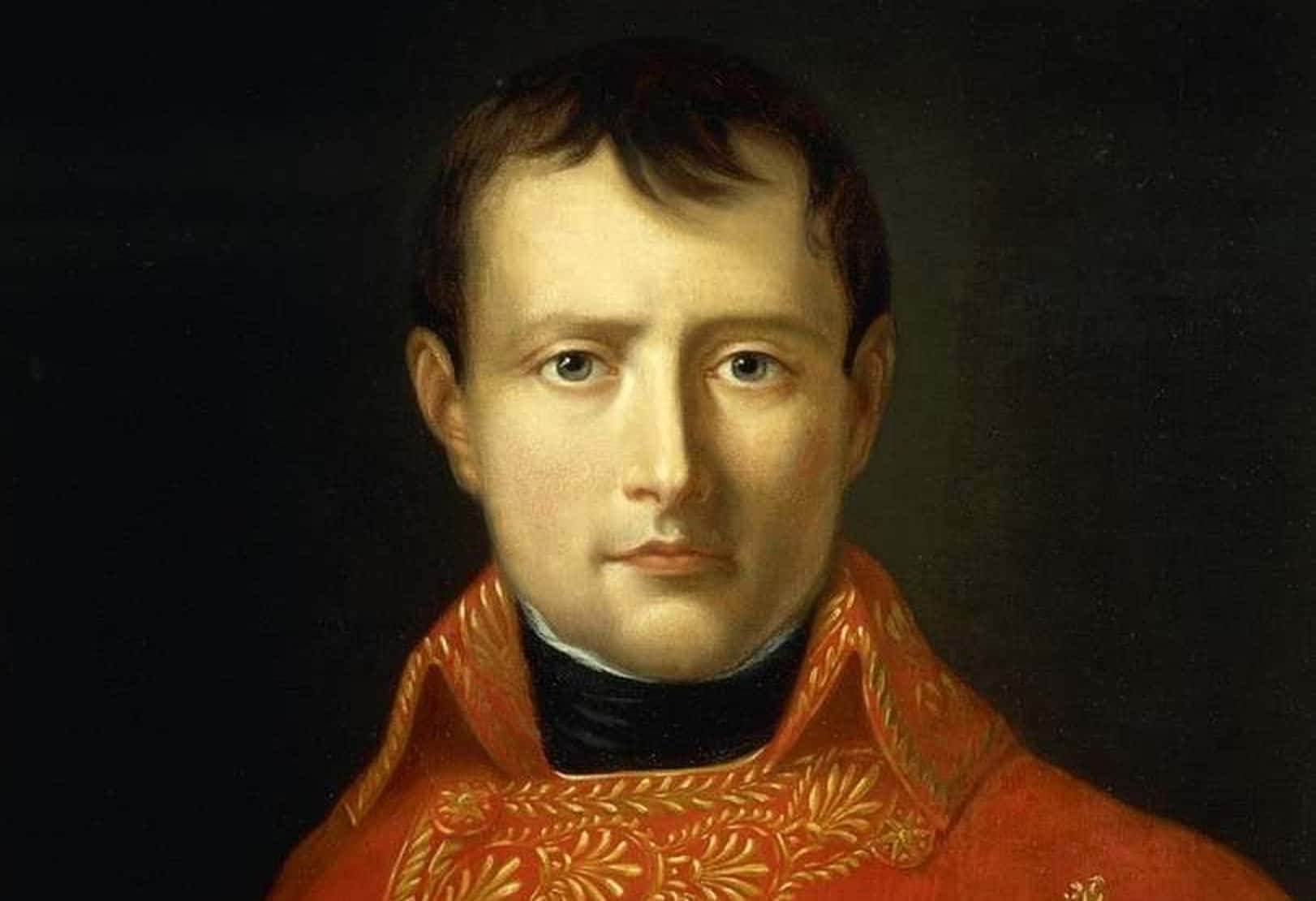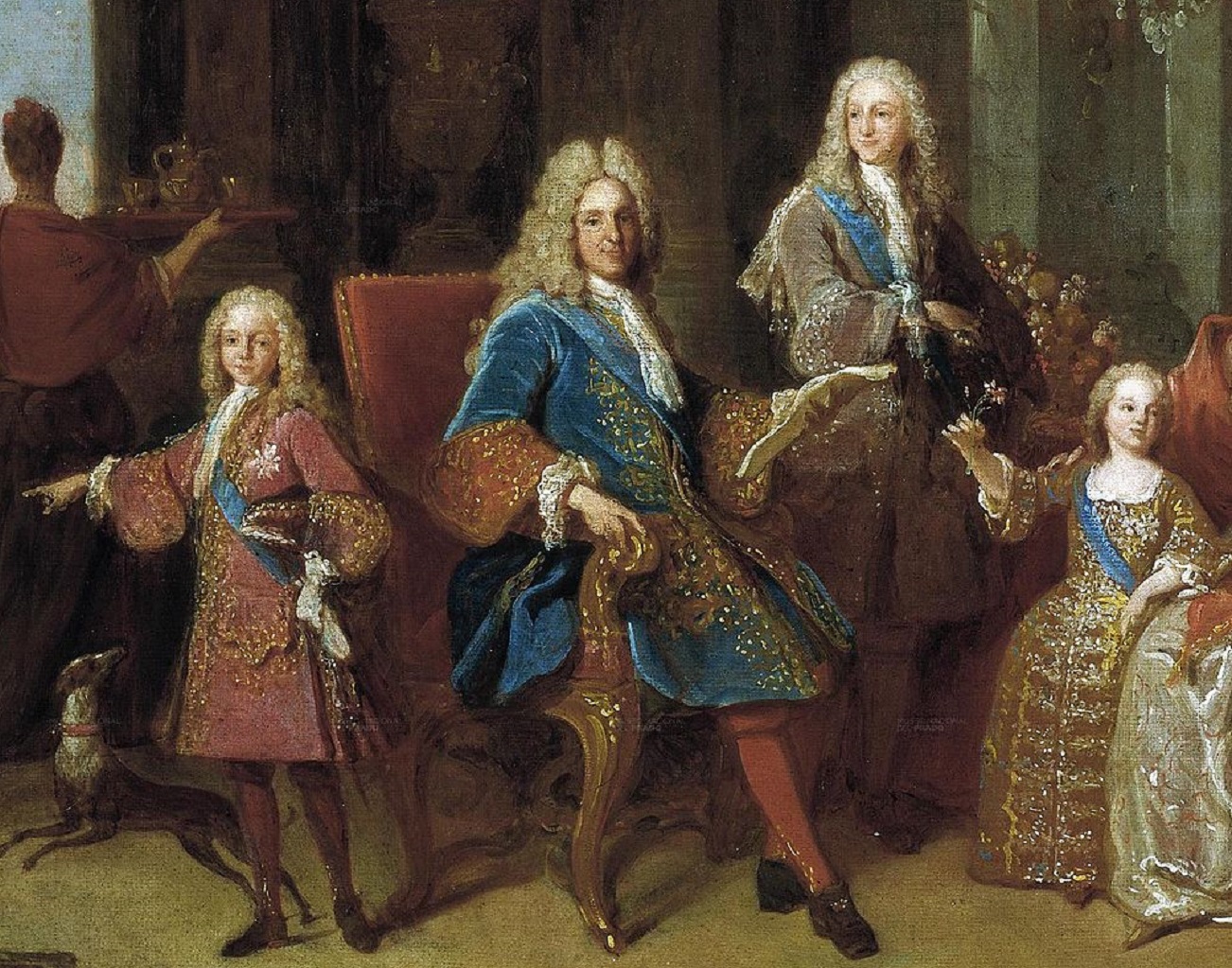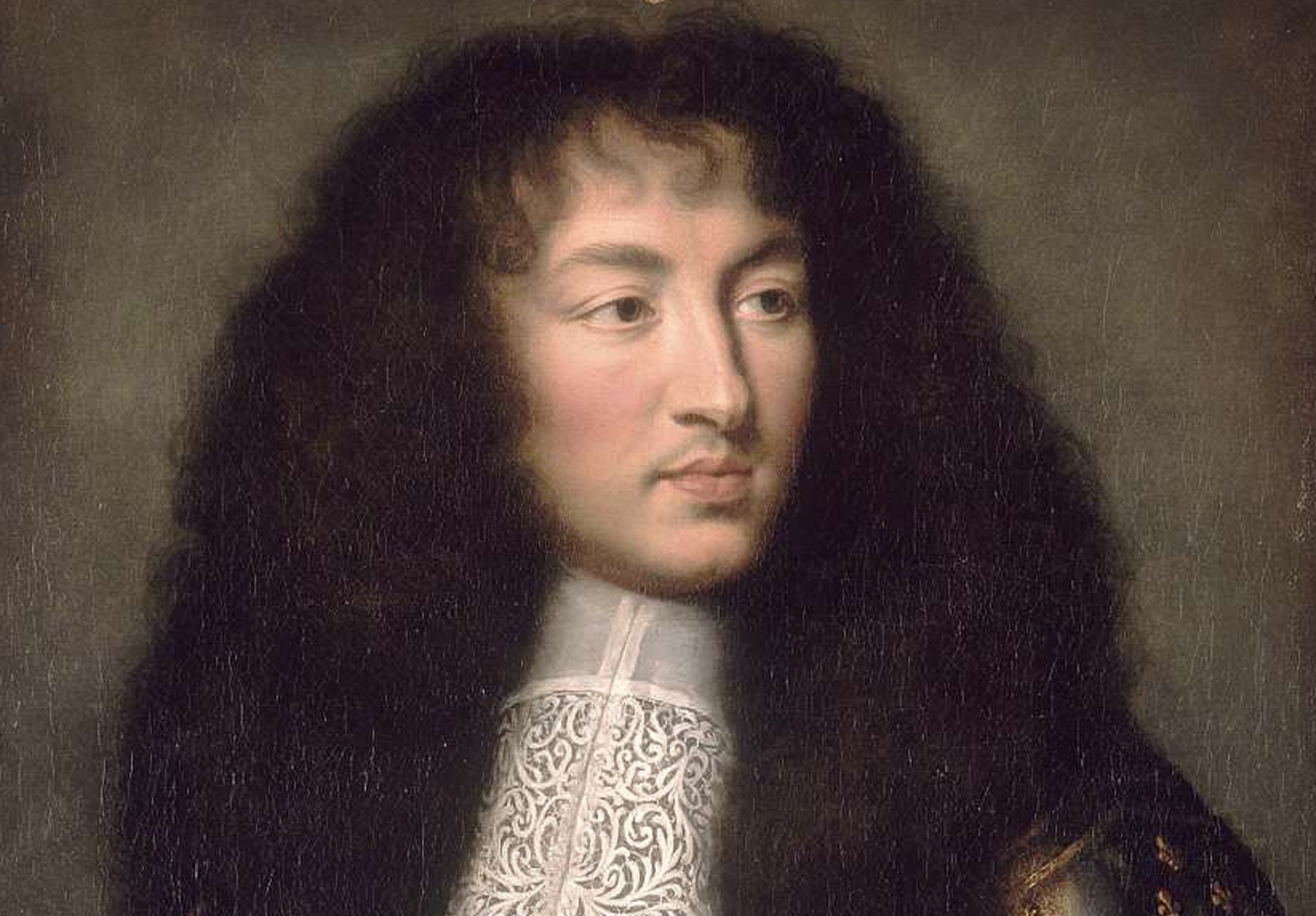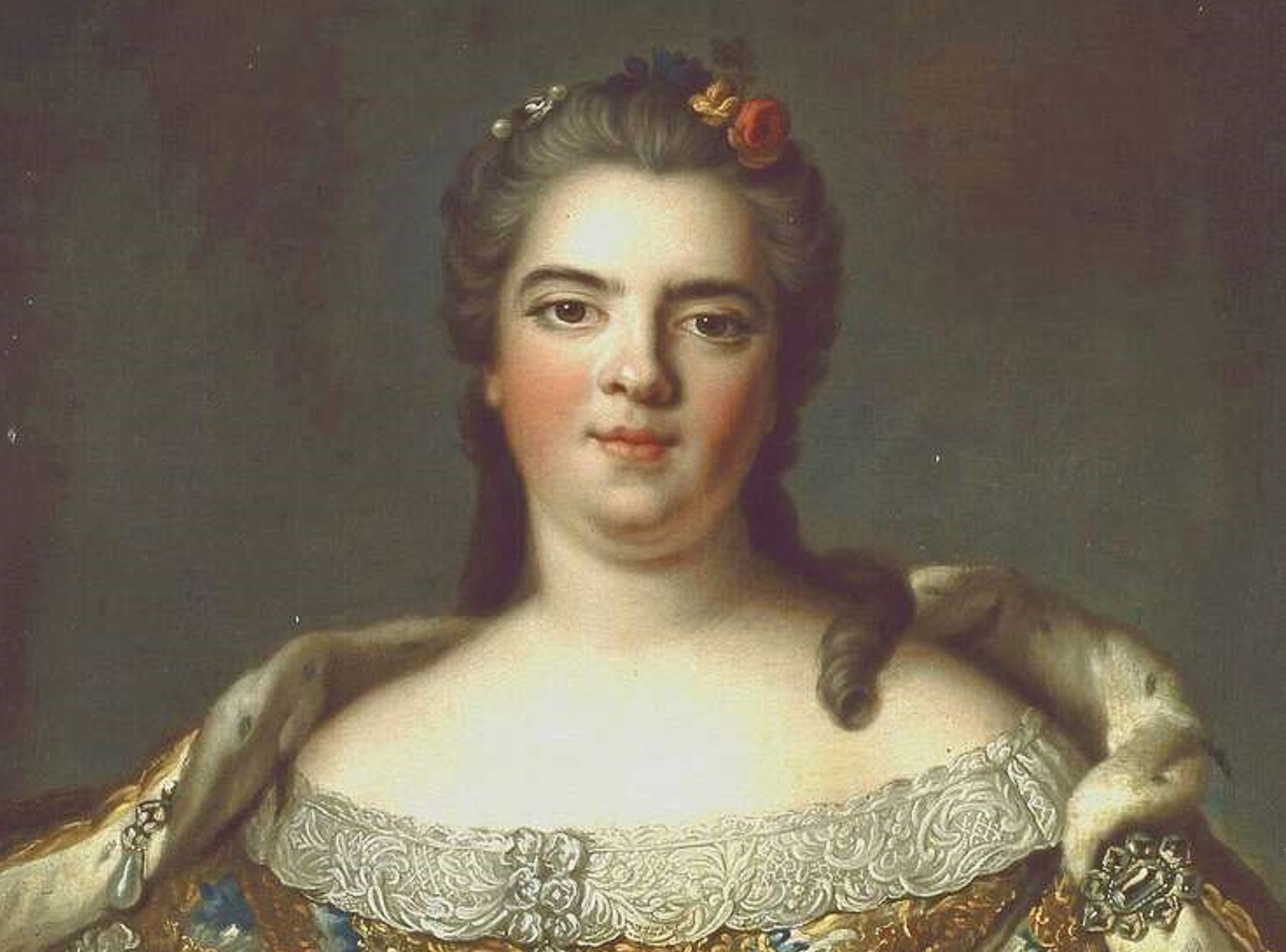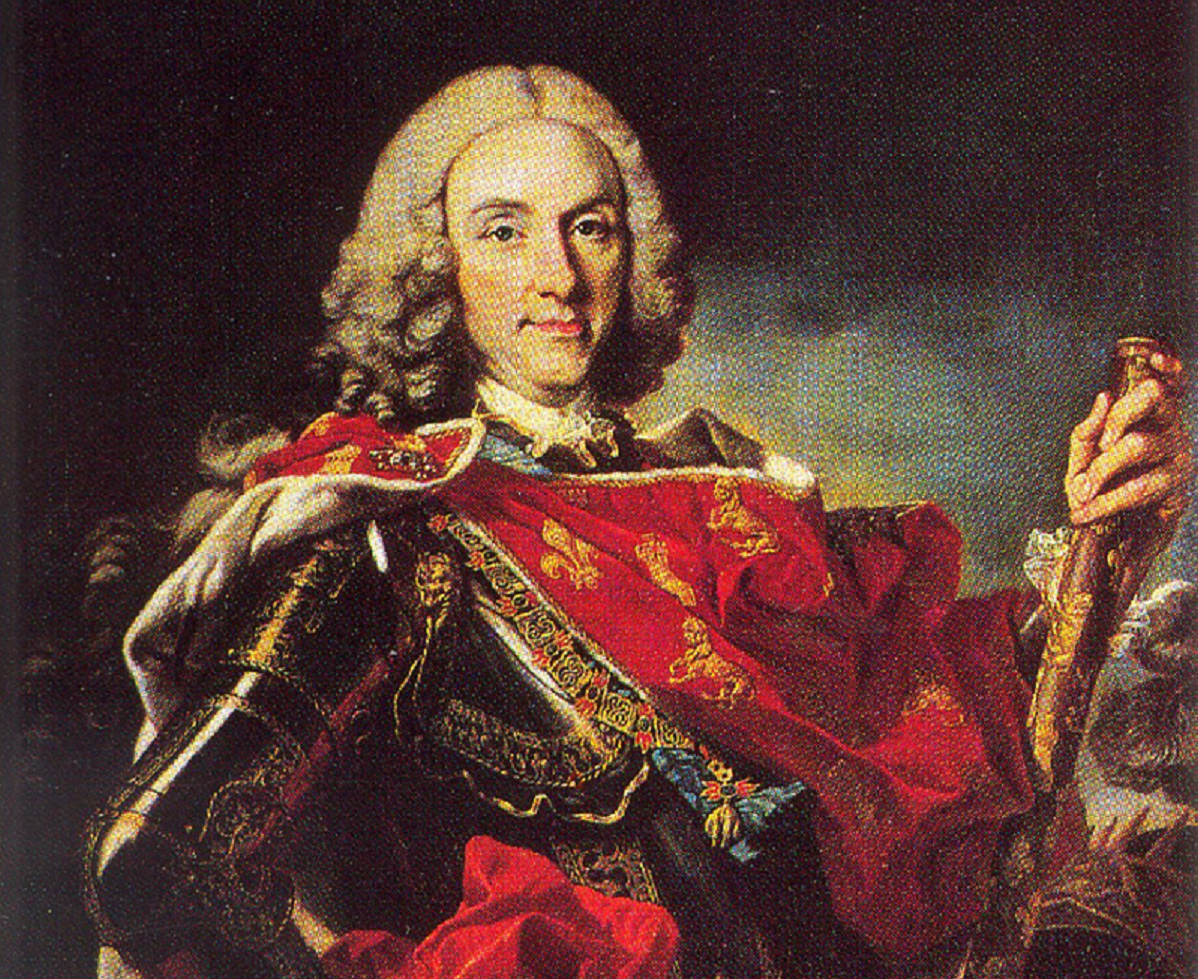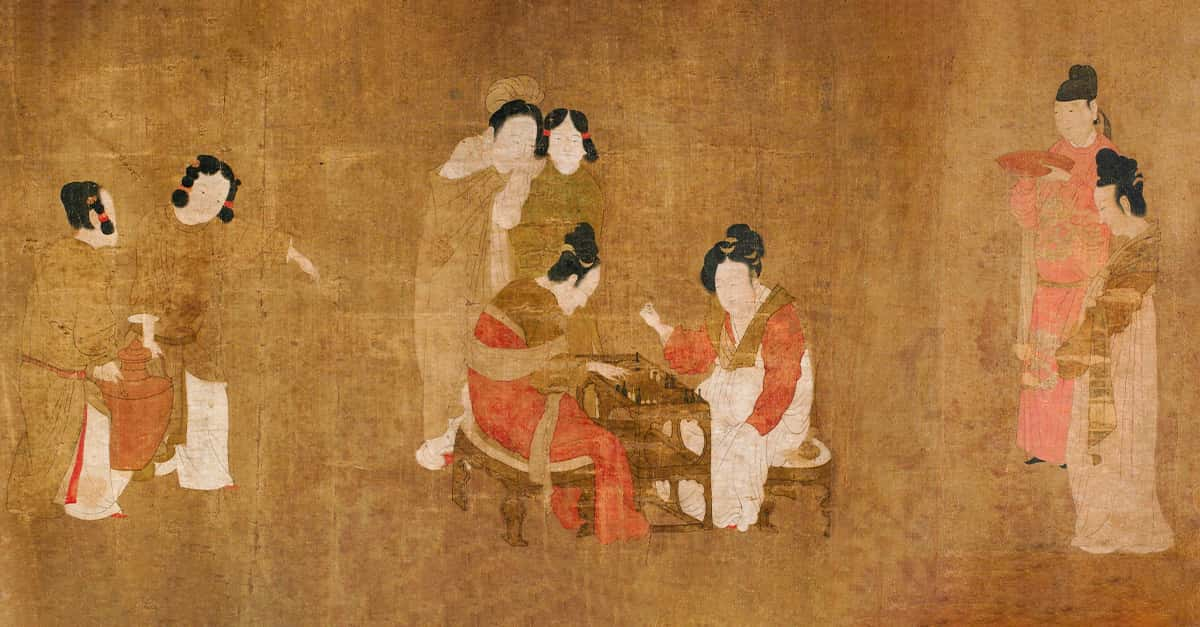Sometimes a royal gets there through a lot of luck and happenstance. That was precisely the case for Philip V of Spain, who despite his regal bloodline was never meant to rule over any throne. Somehow, he wound up not only ruling, but becoming the longest-reigning King of Spain who ever lived. There were poor decisions and wise ones, and a lot of puppeteering along the way. But one thing is certain, his chapters in history are memorable.
1. He Had A Legacy To Live Up To
Philip V was born on December 19, 1683, at the Palace of Versailles in France. His parents were Maria Anna Victoria of Bavaria, and Louis, Grand Dauphin, heir apparent to the French throne. His grandparents were Louis XIV and Maria Theresa of Spain. Certainly, there were grand connections in his tree, but nothing could prepare Philip for the tragedy that would find him early in his youth.
2. He Got Shuffled Around
At the age of seven, Philip lost his mother. She was only 29 at the time of her passing and this left the family reeling. Throughout his youth, Philip and his two brothers were under the care of royal governess, Louise de Prie de La Mothe-Houdancourt. He spent the rest of his childhood jumping from one caretaker to another.
Indeed, he had a sad and lackluster start in life, but a lot more was on the way for him.
3. There Were No Expectations
At birth, Philip became known as the Duke of Anjou, a traditional title for younger sons in the French royal family. His older brother, Louis, Duke of Burgundy, was second in line for the throne after their father. As such, nobody anticipated that Philip—or the family’s youngest son, Charles, Duke of Berry—would ever see a kingdom.
But the game of thrones was rampant in his era, and a lot could change very quickly.
4. He Received A Plot Twist
In 1700, King Charles II of Spain passed without any children of his own. So, things got a little complicated. The next heir ideally should have been the son or first-born grandson of the King’s half-sister, Maria Theresa. There was just one problem. But both of these men (father and older brother to Philip V) were already slated to inherit the French throne one day.
To maintain order, King Charles II selected the next in line, our friend Philip, to succeed him on the Spanish throne.
5. Drama Followed Him
Not everyone was happy about this turn of events. Before Philip ascended to the throne, controversy circulated as to whether or not the rights should really go to the Archduke of Austria. Technically speaking, Philip’s grandmother had previously renounced the Spanish throne for herself and her descendants when she married into French royalty. But that term was contingent upon her dowry being fully paid off, which it wasn’t.
It was this loophole that allowed Philip to enter Spanish royal life, though his family still had to fight for it.
6. He Got In
After a very long Council meeting in France, Philip’s father, Louis, Grand Dauphin, advocated strongly for his son’s right to ascend based on their Spanish ancestry and royal ties. To make the transition smoother, he promised that Philip would revoke his own claim to the French throne, along with all other descendants. And with that, Philip became King of Spain—but he immediately faced challenges he wasn't prepared for.
7. He Couldn’t Speak
When Philip entered court as King of Spain, an ambassador welcomed him with a very lengthy speech. All Philip could really do was smile and nod, because as a lifelong Frenchman, he didn't speak much Spanish. The King of Spain couldn't speak Spanish? It was not a good look, and it would be years before Philip really got the hang of it.
But for what it’s worth, there were other life updates coming that ranked higher on his list of priorities.
8. He Quickly Married
Shortly before his 18th birthday in 1701, the newly crowned King Philip married 13-year-old, Maria Luisa of Savoy. Philip’s grandfather, King Louis XIV, handpicked her to ensure that he maintained strong ties to France. How close were those ties? Well, Philip and Maria Luisa were second cousins.
The couple had two ceremonies in Turin and Versailles, respectively. But this wasn't exactly a fairy tale.
9. His Wedding Was Anticlimactic
Not entirely novel for the time, Philip married Maria Luisa by proxy during the first ceremony, so she wasn’t even present in the room when the arrangement became solidified. But excitement soon followed for them both because she traveled to Nice a few days later and received a greeting from Pope Clement XI, who gifted her a highly esteemed Catholic jewel. From there, she set sail to Barcelona and her new life.

History's most fascinating stories and darkest secrets, delivered to your inbox daily.
10. He Mourned
Philip and Maria didn't take long to get down and dirty, which led to the birth of four bouncing baby boys. But tragedy was on the horizon. Sadly, the king and his wife lost two of their four sons very early on in childhood. Phillippe of Spain only lived for just a few days after birth, and a son by the same name passed at the age of seven from illness. The losses must have been devastating—but as king and queen, Philip and his wife didn't have much time to mourn. They were both outsiders, and they still had a kingdom to run.
11. His Wife Controlled Him
The Spanish public regarded the young Queen as very mature, politically astute, and a hard worker. She is the one credited for invigorating Philip with the energy he needed to lead many of the battles that persisted during his reign. But she made her fair share of enemies. Her influence over the King frightened Philip’s other familial powers.
Louis XIV even intervened at one point to remind his grandson not to allow his wife to control him too much. But, as it turned out, Philip really needed her.
12. He Got Caught In The Crosshairs
In 1701, Louis XIV ignited a true firestorm. He declared a decree that stated if Philip’s older brother passed without an heir, Philip would surrender the Spanish throne and take over rule in France. Around this same time, Louis occupied several towns in the Spanish Netherlands and concerns in Europe grew as it became apparent that Louis wanted to centralize French and Spanish control under one superpower. The Dutch, English, and Austrians then formed the "Grand Alliance" and the 13-year-long War of Spanish Succession commenced.
13. He Kept It Moving
After things really hit the fan, Philip left for Italy so that he could personally take part in some of the battles. He used the experience he gained there when he returned to Spain—he personally fought in several battles over the course of many years. All of this earned him the nickname, "El Animoso", which when translated to English speaks to his unwavering energy; though while he was off fighting, his wife proved she had just as much energy as Philip.
14. He Relied On His Wife
In 1702, while traveling, Philip’s wife—still only 14 years old—ruled Spain entirely in her husband’s absence. As the battle for succession rolled on, she continued to act also as a key advisor to him. Notably though, there’s a little spicy backstory as to who may have actually been in charge here.
15. He Had A Puppetmaster
Some speculate that Philip’s grandfather, Louis XIV hired a spy by the name of Princess des Ursins. Many believe that she largely influenced Philip’s wife behind the scenes and manipulated her into acting on behalf of French interests. Princess des Ursins may have been seen as controlling to some, but in her defense, she expressed different motives when it came to Philip and his wife.
16. He Seemed Incapable
According to correspondences from the time, Princess des Ursins confessed that she saw Philip as a child who was too weak to rule independently. Ouch. She admitted feeling anxious about his leadership and tried to exclude him from things as much as possible, but in the process, she became somewhat of a burden to him.
17. They Went Too Far
The European allies wanted to humiliate Philip as much as possible during a possible dethroning. They requested that his grandfather, Louis XIV, send the French army to personally invade Spain and remove Philip. For the French King, that was a bridge too far. Ultimately, Louis XIV couldn't bear the humiliation, so he rescinded his offer of peace. Tensions continued, but it didn’t take long before similar possibilities showed up for Philip once again.
18. He Changed History
In 1712, after many years of fighting, Philip had the choice of renouncing the Spanish throne to become heir of France, but he refused. Instead, he chose to do quite the opposite. He relinquished all rights to the French throne under the condition that the Spanish crown became limited to his entire male lineage before any woman in the family could receive an opportunity to rule.
When this term passed, peace terms were drafted at the second Treaty of Utrecht and the conflict ended. It had looked dicey there for a minute, but Philip had ended up on top.
19. He Lost In The Aftermath
With the ending of the War, Philip became properly recognized as the legitimate King of Spain—but it wasn't all good news. The European alliance forced Spain to cede territories across Europe over to Great Britain, the Austrian Habsburgs, and Savoy. These losses hugely weakened the power of the Spanish Empire. But Philip wasn't going to take this lying down.
20. He Struggled To Regain Influence
Scrambling, Philip attempted to reverse and overturn the terms of the Treaty of Utrecht throughout his reign. He also tried to re-establish Spanish claims in parts of Italy. This action catalyzed the War of the Quadruple Alliance, which saw Spain face up against four major powers in Europe (Britain, France, Austria, and the Dutch Republic).
He couldn't overcome such odds against him, and he ultimately sued for peace. Thankfully for him, though, there were are least some positives.
21. He Brought New Order
Once things ended, Philip did all he could to reinforce the Spanish dynasty. He instituted policies that helped with the kingdom’s economic expansion. With the support of his ministers, he achieved quite a bit despite his struggles. This was perhaps most evident in the more regal parts of the nation.
22. He Loved The Finer Things
Philip and his aides rebuilt the royal household in a decadent French style and began working on army reform. Additionally, he developed Spain's infrastructure, inviting engineers and tradesmen to construct new roads and canals. Granted, Philip’s critics attribute these accomplishments to his trusted advisors more than anything else, but he was still the King, after all.
Unfortunately, tragedy was just around the corner.
23. He Lost His Wife
In 1714, Philip’s wife came down with tuberculosis and succumbed to the disease when she was just 26. The loss hit hard for the Spanish people, as she was very well-liked amongst the masses. Likewise, Philip was also overcome with grief. However, he spent little time searching for a new wife. He found the woman he was looking for less than a year after he lost Maria Luisa.
24. Philip Chose A Wildcard
Philip fell for Elisabeth of Parma the moment he saw her, and quickly made their relationship official. The king also worked once again with the Princess des Ursins (spy of Louis XIV), and although she had supposedly controlled much of his first wife’s behavior, this would not be as easy where Elisabeth was concerned. Princess des Ursins accused Elisabeth of being cunning and the two ladies even had a loud argument in earshot of a public gathering once. Maybe she was right about Elisabeth, because this spat cost her everything.
Guards took Princess des Ursins into custody after the incident and escorted her out of the country soon after. This left Elisabeth a free agent for a bit, which really paved the way for her union with Philip.
25. He Sealed The Deal
In 1714, Philip married Elisabeth of Parma after falling in love at first sight. The couple had a nine-year age difference, with her being 22 to Philip's 31. Cardinal Alberoni, one of Philip's statesmen, presided over the wedding. The union that followed, however, was anything but holy.
26. He Pulled Out All The Stops
Philip was known to have a strong appetite for physical intimacy, but he also observed his faith devoutly. Many writers believe that his mad dash to get married both times was inspired at least partly by his impatience in returning to the marital bed. But with Elisabeth, that act came with a cost. She demanded to be decked out in jewels before anything could happen between the sheets.
Philip responded by delaying a fleet of 12 vessels so that he could accelerate the fulfillment of her request. This urge to please was a sign of things to come.
27. He Fell Into A Funk
After marriage, Philip suffered serious bouts of manic depression and transformed into a very passive leader. His wife then took over in many ways and became the dominant one in the relationship, despite their age difference. In the meantime, Philip resorted to what some regarded as unusual efforts to try and regain some serenity.
28. He Got Serenaded
In August of 1737, a singer by the name of Farinelli became the "Musico de Camara of Their Majesties". Essentially, he performed eight to nine songs with a group of singers every night for Philip and Elisabeth—all in hopes to lift the King’s mood. Unfortunately, this made little long-lasting impact and Philip continued to suffer greatly from depression. As the years wore on, this manifested outwardly more and more.
29. He Fell Even Deeper
Philip’s behavior became more unusual with time. He slept during the days and performed regular activities during all hours of the night. He avoided contact with courtiers and retreated to solitude as much as he could. The once energetic king became known for getting overtaken by his unsurmountable sadness. Given the circumstance, he needed help.
30. Elisabeth Was More Ambitious
Perhaps due to his emotional struggles—or maybe just a facet of his personality—Philip appeared to take a major step back even when it came to political matters. This opened up space for his wife to step up. Although the couple had six children together, she recognized that none of them would likely inherit the Spanish throne because of his children from his previous marriage.
This left her searching elsewhere to secure the prospects of their sons.
31. His Wife Found New Ties
With some help from allies—and the persistence of Elisabeth—three of Philip’s sons later ascended later to positions of great power in Italy. Charles became King of Naples and Sicily; Philip rose to be the Duke of Parma; and Louis became the Archbishop of Toledo. Talk about making mommy proud!
32. He Became Sullen
Philip detested court life and representing the crown publicly. With time, he preferred to tuck himself away in smaller hunting palaces. But with his absence from court life came public disapproval. He was greatly criticized for his lack of visibility and what respect remained for him amongst the public started to fade. He was in need of more than just a little help or moral support at this point.
33. He Was Second In Command
Given his disinterest, Philip’s wife saw this as an opportunity to step up even more than she had previously. She became more and more politically involved and it was no secret that by the time 1719 came around, she was widely regarded by many as the actual ruler of Spain. This switch did not light any fire under him to act differently whatsoever.
In fact, his disinterest in royal life was leading him to monumental decisions.
34. He Gave Up
On January 14, 1724, Philip abdicated the Spanish throne and his eldest son Louis—who was 17 at the time—took over. Many attribute the abdication due to his mental health decline and that waning interest in court life; it’s rumored that Philip simply no longer wished to reign because he was actually very aware of his emotional instability and could not foresee a positive way to decide wisely in political matters anymore. Like most things though, this theory has its criticisms.
35. He May Have Been Calculated
Some historians suggest a more troubling theory. Many scholars believe that Philip’s abdication had much more to do with the fact that so many male members of the French royal family were dying from disease. In fact, just a month prior to Philip’s abdication, the supposed heir to Louis XV of France passed, which meant that another battle for succession possibly loomed.
Depressed as he was, Philip had no time for that.
36. He Got Thrifty (Maybe)
As always with the game of thrones, it could be hard to discern someone's motives. Yet further writers believe Philip's abdication was based on ambition, not sadness or fear. In order to circumvent Treaty terms that forbade a union between Spanish and French crowns, many believe that Philip left the Spanish throne so he could stand a chance at taking over in France, his homeland from all those years ago.
Regardless of which theory is more likely though, this chapter was a short one for Philip anyway. A tragic surprise was on its way.
37. His Plans Changed
After ruling for just seven months, Philip's son Louis succumbed to smallpox on August 31, 1724. Philip had little choice but to reclaim the throne that he'd given up. The next of Philip’s sons in line was Ferdinand, who was just a boy at the time. Philip didn't want to be king, but he couldn't do that to his own son, so he stepped up yet again.
38. Back At It
Philip retook the Spanish throne in 1724. Despite his reluctance, he ended up ruling until 1746, which marks him as having the longest reign in the history of the Spanish monarchy, since he cumulatively held the title of King for 45 years. He didn't just rest on his laurels, either. During his second run at things, Philip made some new waves. He decided it was finally time to go back and finish what he started.
39. He Couldn’t Balance The Books
Despite his military prowess and success, there was one thing that Philip V couldn't achieve. When Philip rose to power (again), Spain was struggling financially. Rather than invest funds into repairing the nation, Philip spent money on looking after the palace instead. As a result, the army went months without pay, and the country continued to suffer. Eventually, Philip even had to suspend payments of silver made to the New World, and Spain fell into bankruptcy.
40. He Craved More
Philip supremely loved history, art, and education. So during his reign—with so much faltering around him—he still found the time to found Cervera University and the Seminary of Nobles in Madrid. He also provided support in developing royal academies of history, medicine, law, and the arts. Culturally speaking, at least, he left a real impression.
41. He Had A Rough Ending
By his early 60s, Philip's health began to fail. His melancholia remained, and his heart started to give out as well. His final days were beyond difficult, as he was bedridden due to his extreme suffering. He finally succumbed to his illness on July 9, 1746, at 63 years old. After his passing, his son from his first marriage, Ferdinand, succeeded him as King of Spain.
42. His Final Request
Traditionally speaking, Philip should have been buried in the Pantheon of Kings in the Royal Crypt of the Monastery of El Escorial. However, he chose instead to have the Royal Palace of La Granja de San Ildefonso as his final resting place. Although still located in Spain, the architecture there reminded him of the French courts of his childhood, which he spent the rest of his life longing for.
43. As For His Legacy
Historians have largely criticized Philip V for favoring his French roots over his Spanish duties. These critics were quick to point out that Philip was more often a liability than an asset to the kingdom. However, some historians present a more complicated picture, unwilling to overlook his accomplishments. In particular, they recognize his efforts in advancing industry, agriculture, and shipbuilding.
Regardless of where one falls when reviewing his record, the longest-reigning King of Spain lives on in many ways.
44. He Became Art
Considering how much he loved art, it’s only fitting that a portrait of Philip hangs in Valencia's Museo Del Almodi. However, he’s commemorated with a twist. To acknowledge the humiliations endured by the city of Xativa following Philip’s victory in the Battle of Almansa, wherein he ordered the city to be set on flames and renamed San Felipe, the painting hangs...upside down.
45. He’s International Now
Philip supported Spain’s Atlantic trade with its American territories. Due to his work in that regard, the New Philippines, which includes parts of modern-day Texas, have areas named after Philip. Though many have forgotten the origins, you can still see Philip's legacy all over the modern world.
46. His Family Ties
Philip was born a French prince with a tenuous connection to the throne, but he endured to become the longest-reigning monarch in Spanish history—and it didn't end there. His direct male descendants remained on the throne until the rule of Napoleon Bonaparte.
47. He Had The Hots For His Queen
Sometimes, royal marriages weren’t really accompanied by love or even lust. But for Philip, this union was not just about family ties and political gain. He deeply loved his young bride, and he even made it a point to share the same bed as her, which also was uncommon for the times. All of that quality time together led to the birth of four sons—two of whom would succeed him in the future as Kings of Spain.
But it wasn't all happiness for the young King and Queen.
48. His Uncle Almost Sold Him Out
During the War of Succession, Philip actually led pretty well, and he claimed many territories for Spain. But, before he could enjoy his spoils, his own blood betrayed him. In an effort to bring peace, Louis XIV agreed to surrender Spain in exchange for allowing him to keep Naples. He even said he could furnish some money to expel Philip—his own grandson—from Spain in the process. But there was one catch that saved Philip.
49. He Started A Search
Philip just did not wear single life well. So, after some back-and-forth with Italian royals, it was arranged that he would meet Elisabeth of Parma. Chaos and gossip preceded the meeting, however. Elisabeth was viewed by some as a simpleton, which pleased those wishing to manipulate and control the court. However, things were not as they seemed when it came to Philip’s new bride-to-be.
50. He Took Centre Stage
Philip was instrumental in reconquering Naples and Sicily. He also successfully defended Spain’s American territories away from a British invasion. In addition, he made new gains during the War of the Polish Succession. However, in spite of all these accomplishments, Philip also made some pretty epic errors. His biggest mistake? Draining the royal coffers to pay for his troops—and his lavish lifestyle.
Sources: 1, 2, 3, 4, 5, 6, 7, 8, 9, 10, 11, 12, 13, 14, 15, 16, 17

